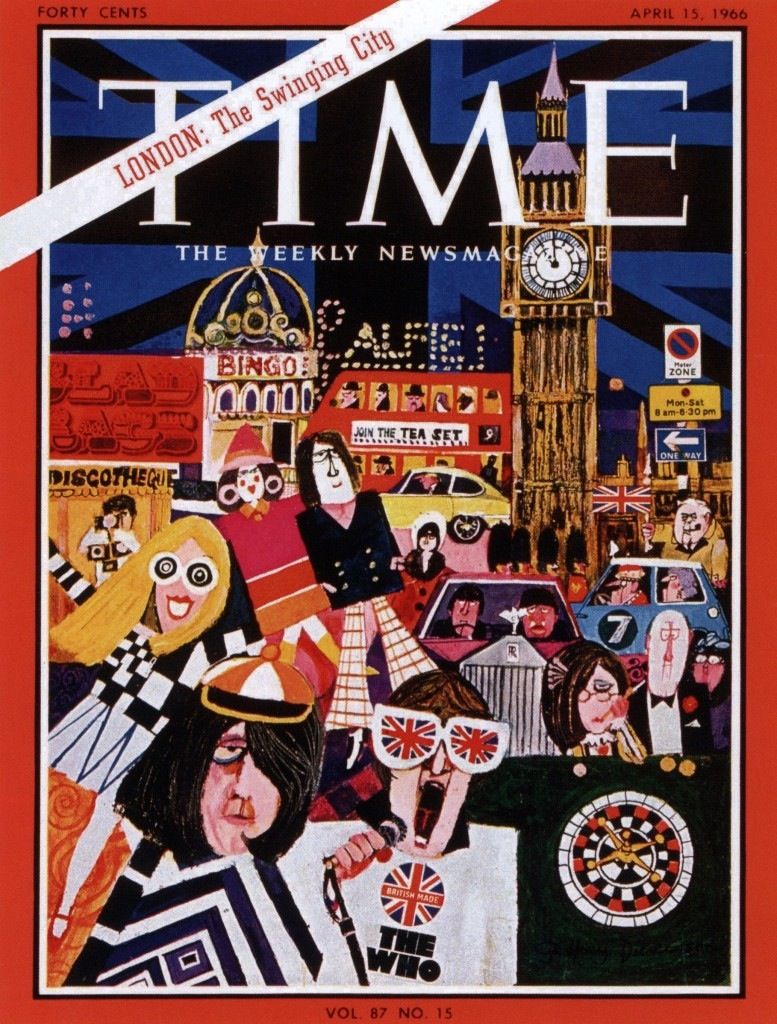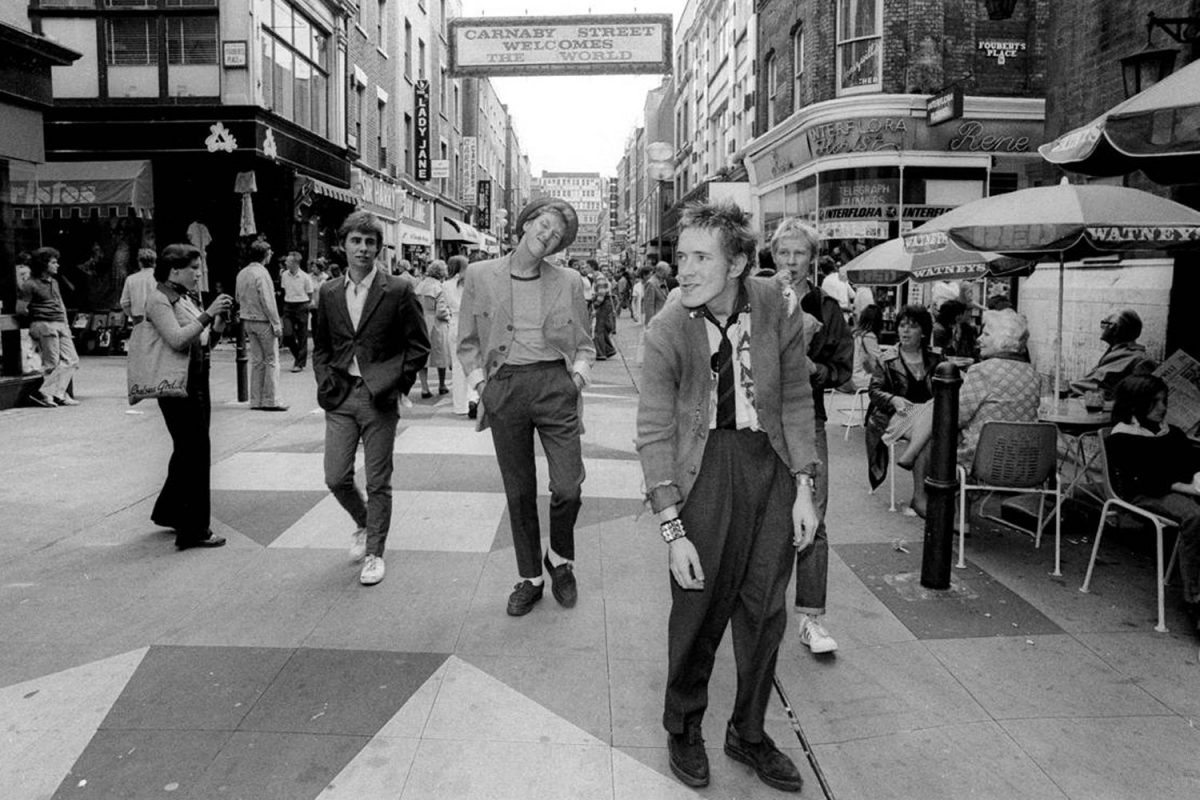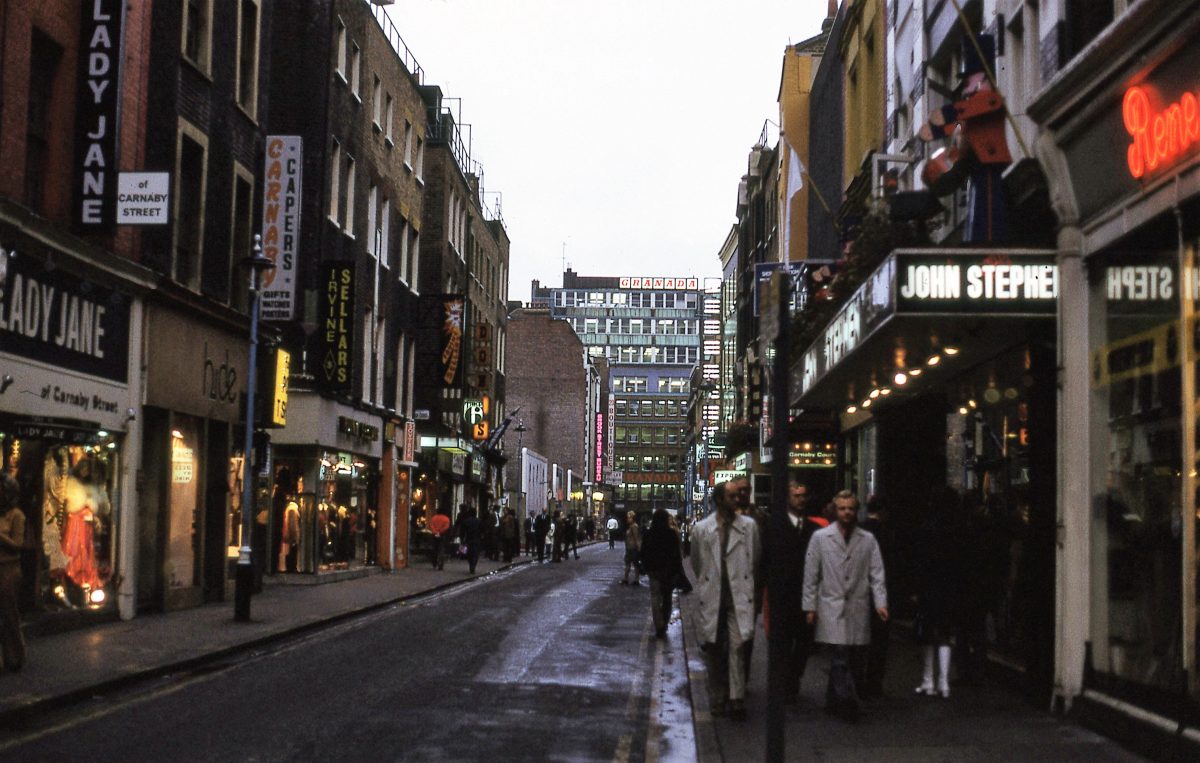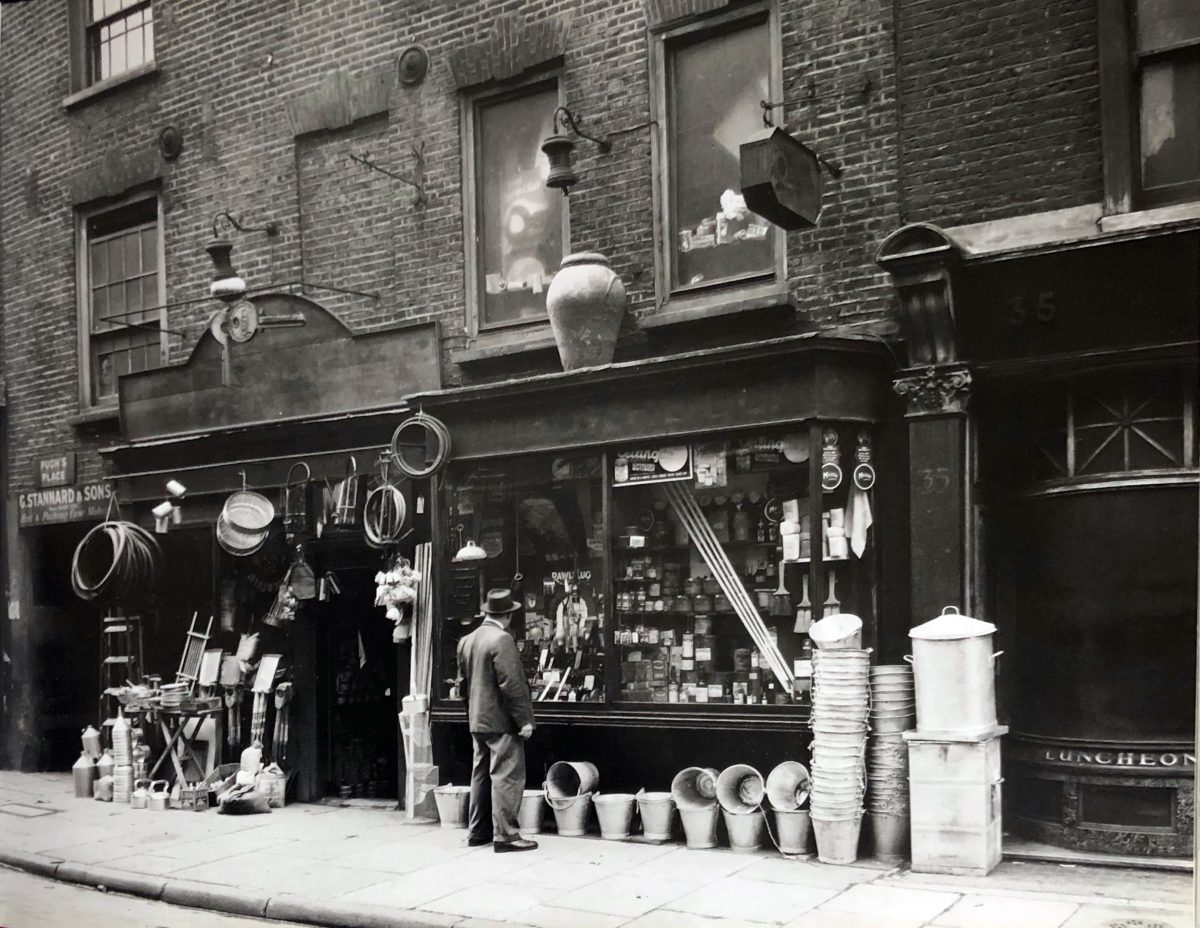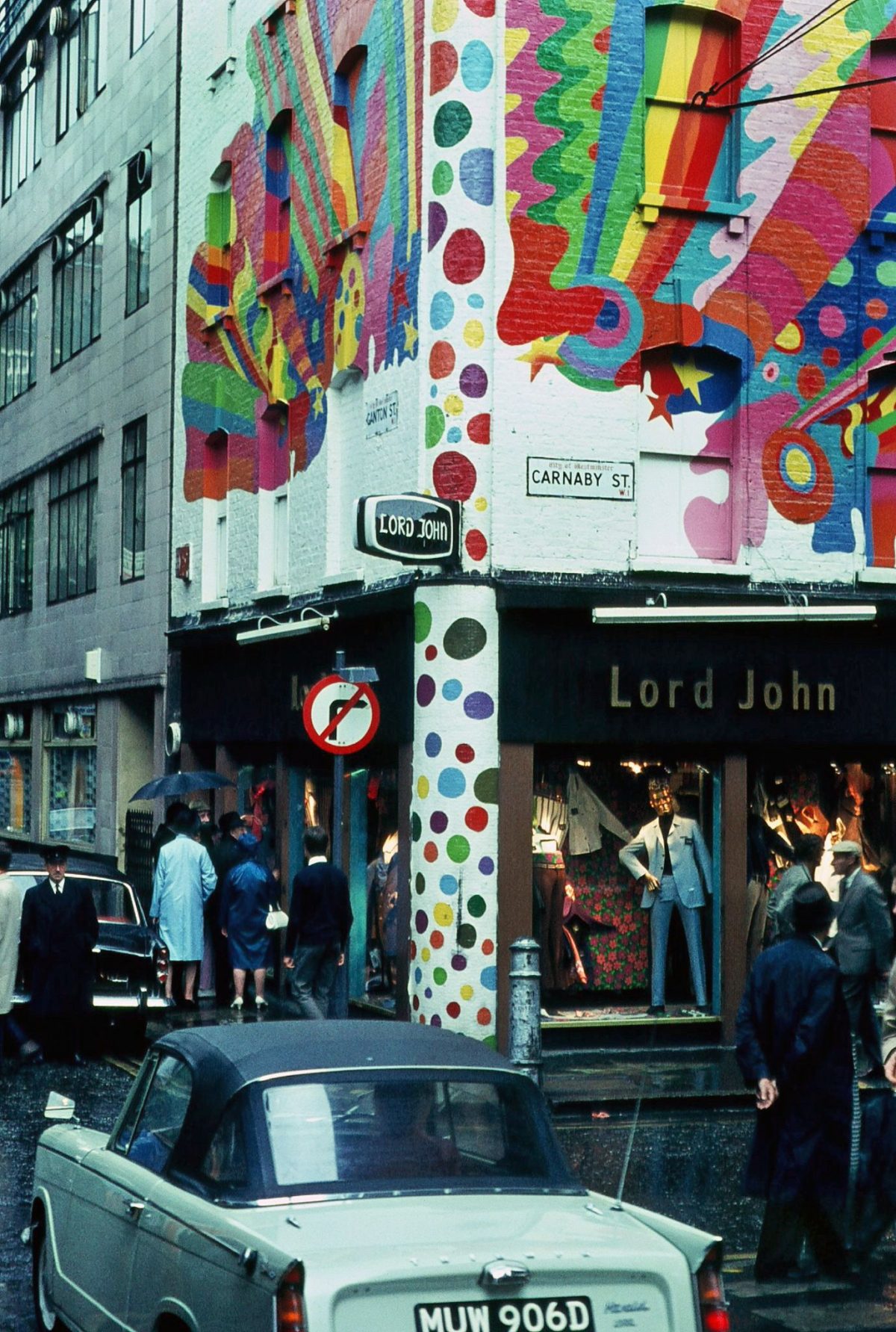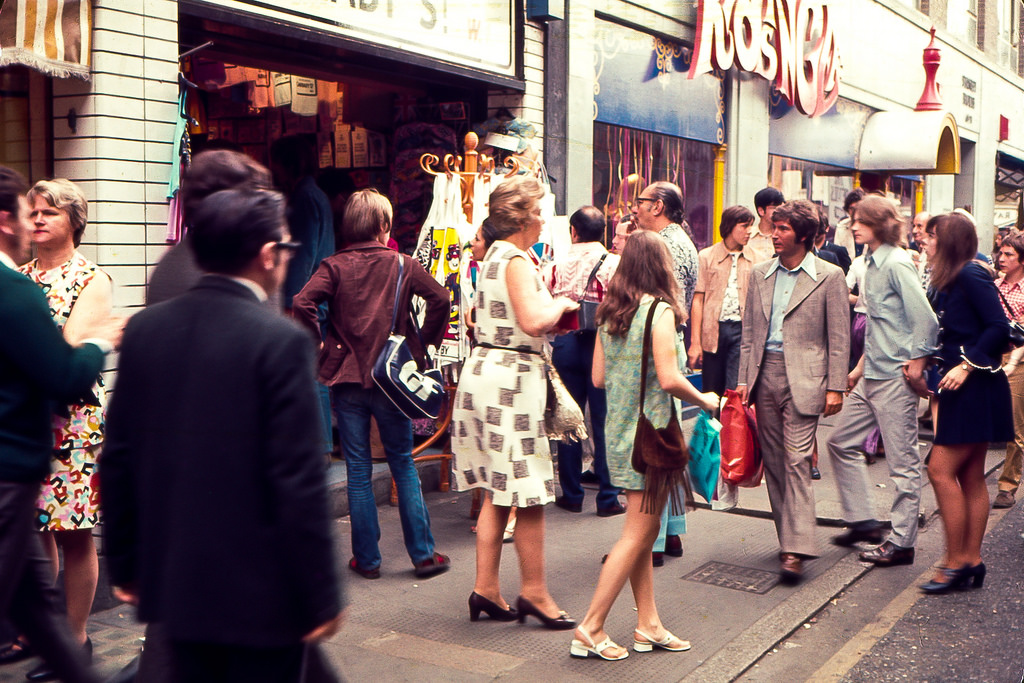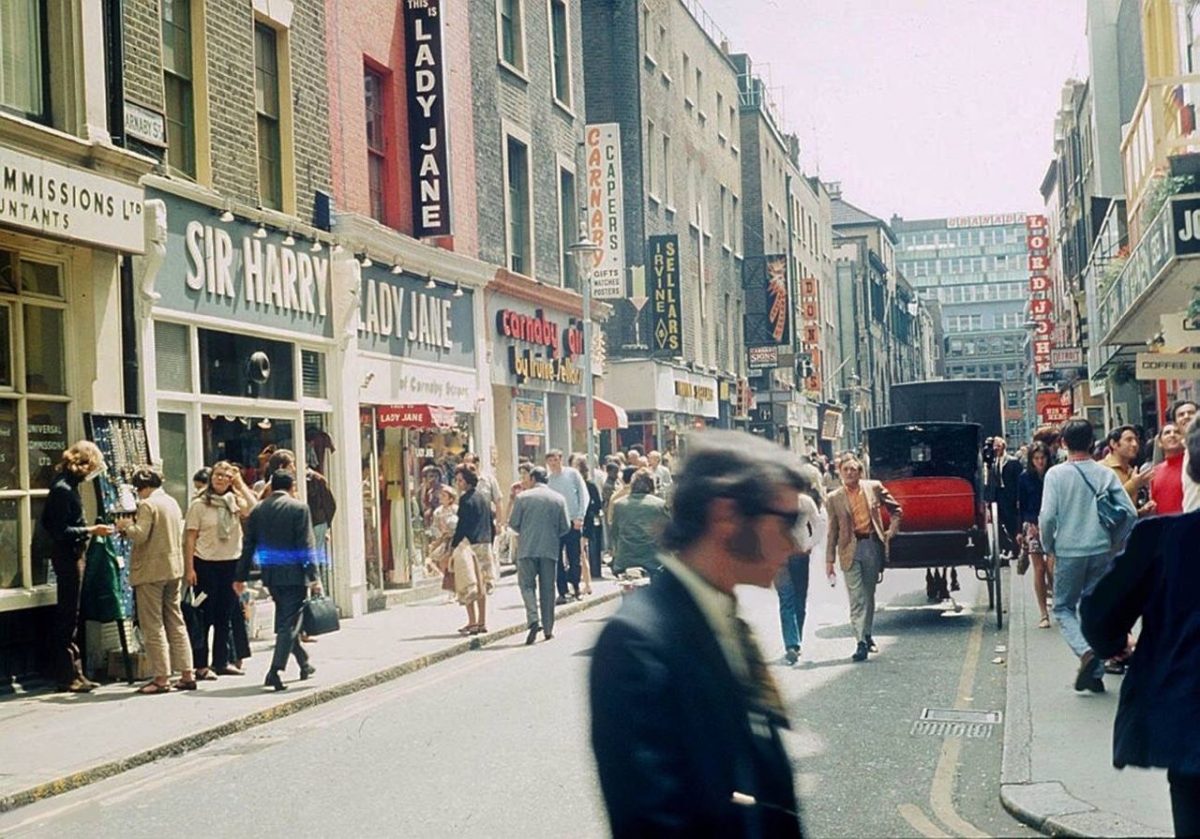
Carnaby Street became famous throughout the world after the 15 April 1966 publication of Time magazine’s cover and article that celebrated the street’s role:
Perhaps nothing illustrates the new swinging London better than narrow, three-block-long Carnaby Street, which is crammed with a cluster of the ‘gear’ boutiques where the girls and boys buy each other clothing…
Carnaby Street gets its name from Karnaby House, which was built in 1683 to the east of the road. No one knows where the name originally came from. The street was probably laid out in 1685 or 1686 and within three or four years was completely built up with small houses. They were not built to any high standard and were all replaced in the 1720s (numbers 22, 23 and 40 survive from this time). At the same time as the rebuilds a market started in the 1820s. Benjamin Disraeli, the British Prime Minister, referred in his novel, Sybil (1845), to “a carcase-butcher famous in Carnaby-market”.
By the middle of the 19th century Carnaby Street was given over to trades of various kinds including tailors working for the gentlemen’s outfitters in nearby Savile Row.
In the 1950s some of these tailors began to produce clothes for direct sale and smartly dressed Mods came to Carnaby Street for relatively cheap, stylish suits. From that time the street has always catered for men’s fashion and clothes. Off-the-peg fashion retailers joined the tailors and seemingly overnight Carnaby Street and its immediate environs became famous for the trendy boutiques and their ‘dedicated followers of fashion’ who were their customers.
In October 1973, the Greater London Council tried to revitalise the street and pedestrianised the street and covered it with an odd rubberised surface.
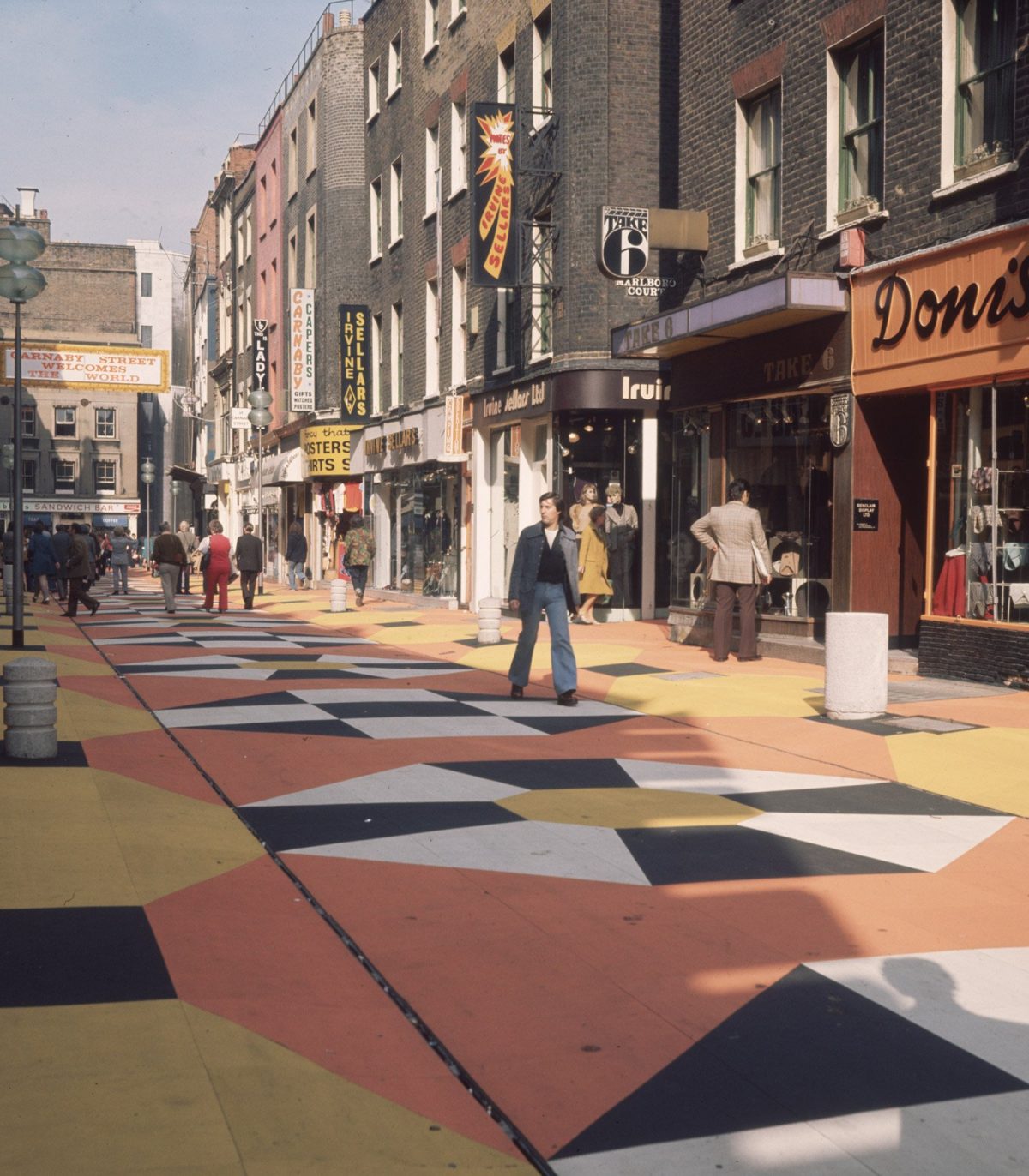
1973 – Carnaby Street gets a makeover featuring new rubberised, coloured paving tiles. Graham French
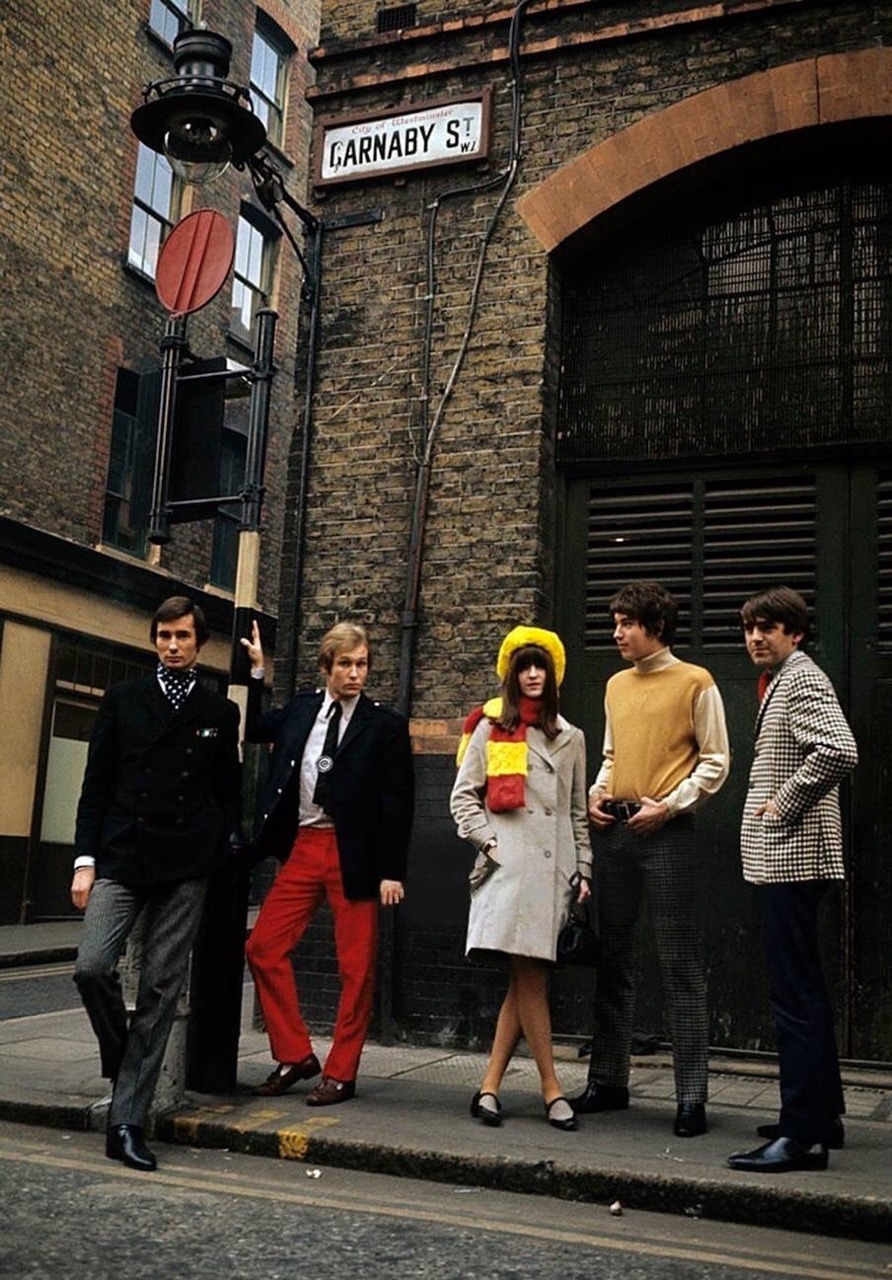
A Band Of Angels with Cathy McGowan in front of 19 Carnaby Street, junction with Ganton Street. Andrew Petre, Mike d’Abo, John Christian Gaydon (who later co-formed EG Management) and David Wilkinson. Philippe Le Tellier (Paris Match), winter 1965.
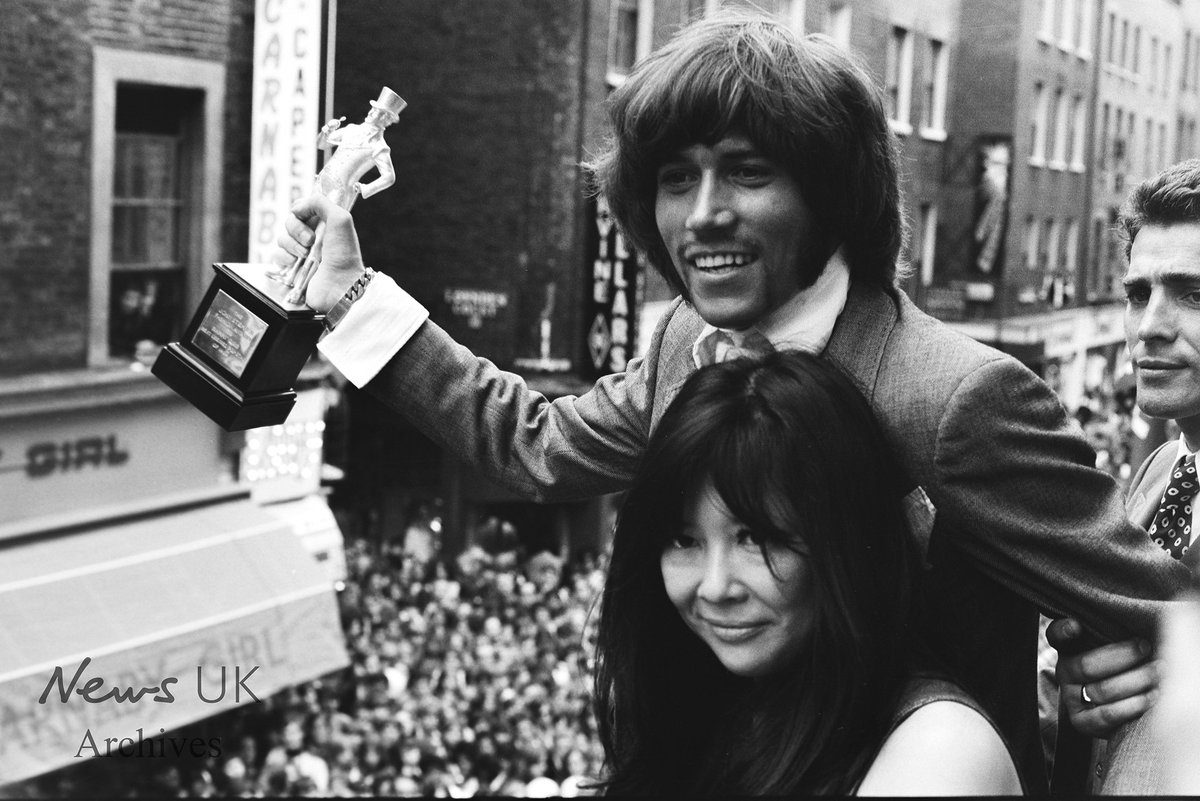
Barry Gibb, is awarded a statuette by Chinese-British actress, Tsai Chin, after being voted best dressed pop star by Radio Luxembourgs 208 People Club at Youthquake, Carnaby Street, London, July 12th 1969
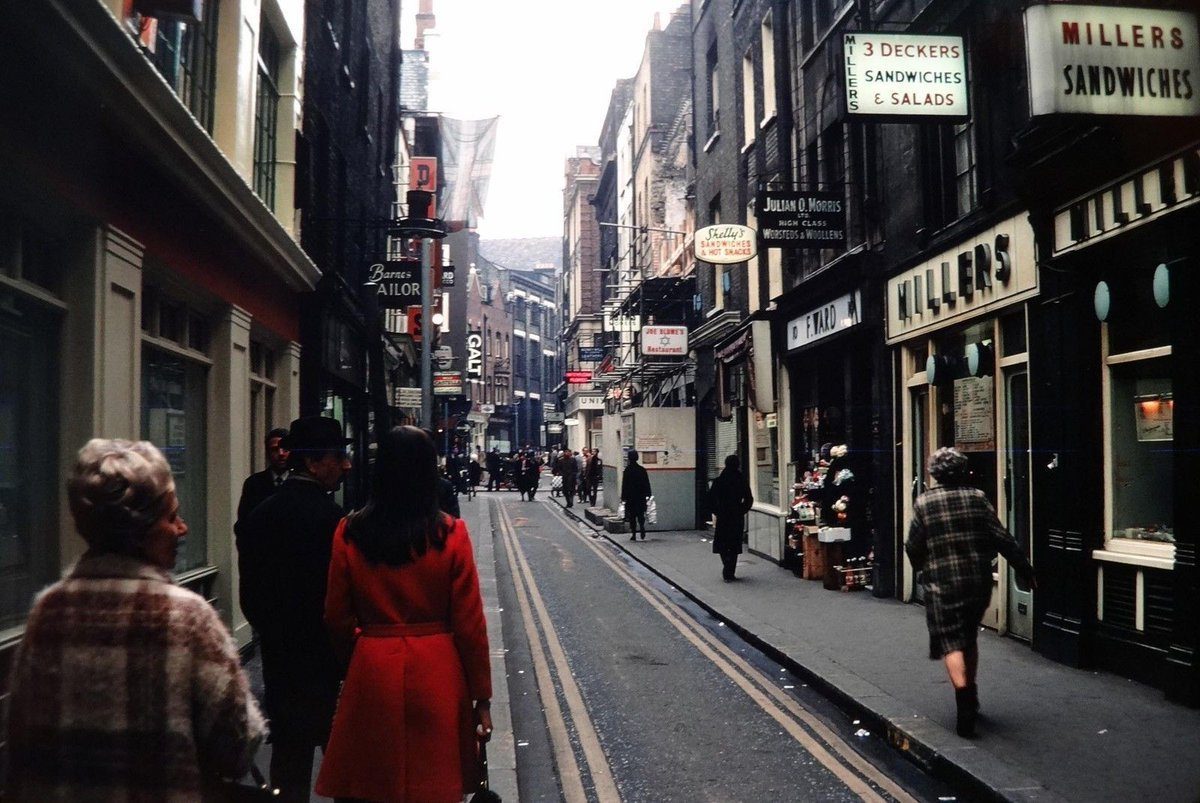
1969 and a rather grim view down Fouberts Place towards the junction with Carnaby Street.
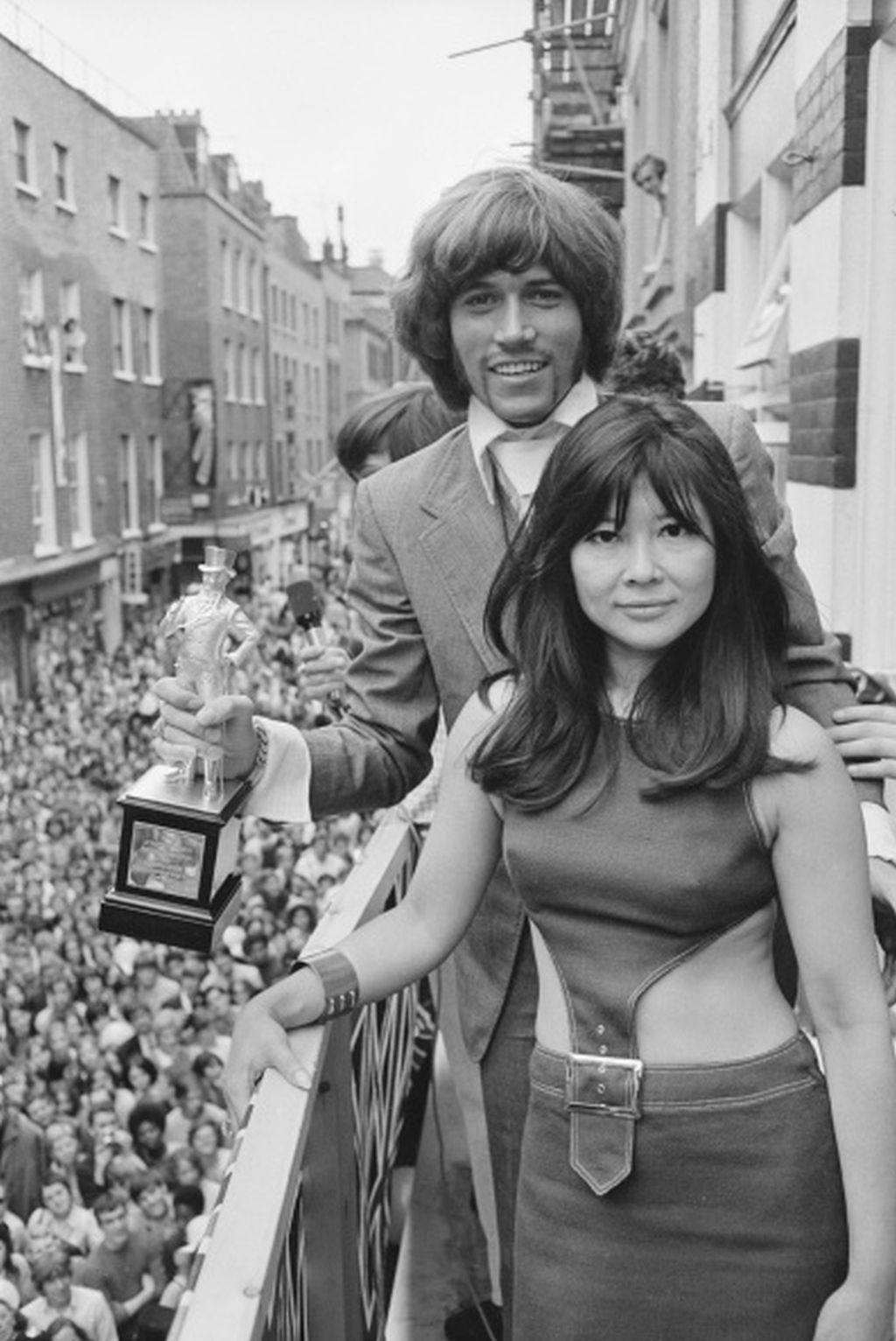
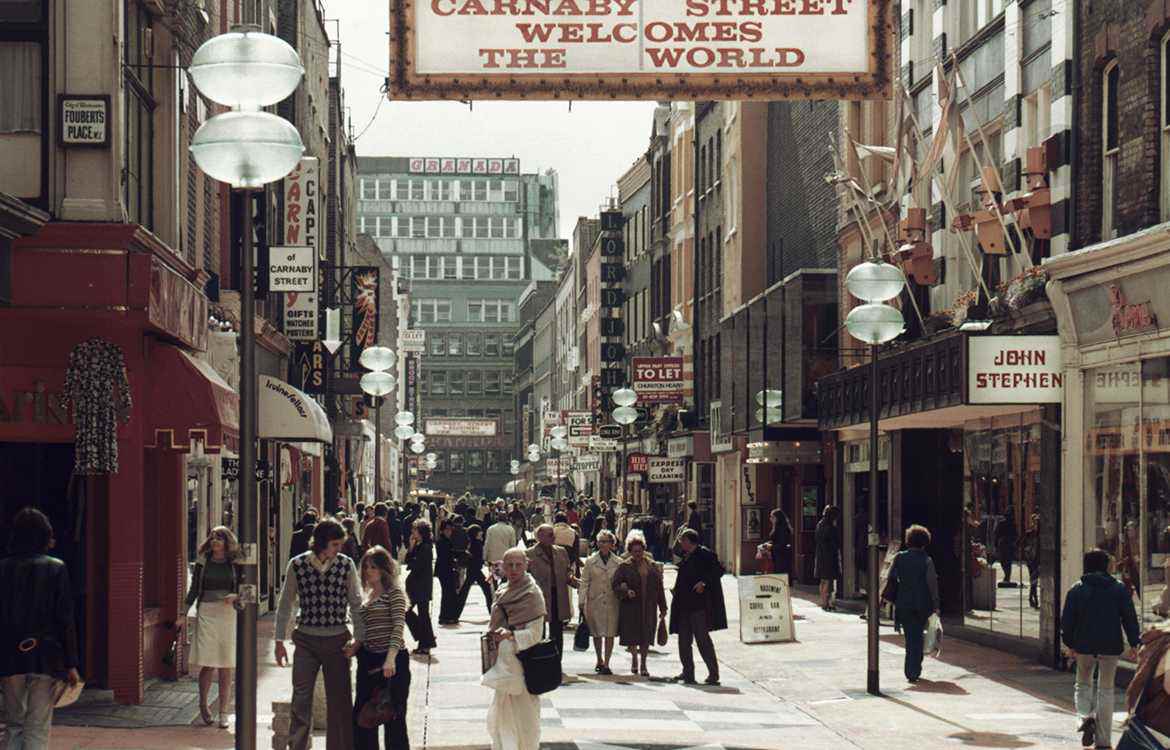
Carnaby Street
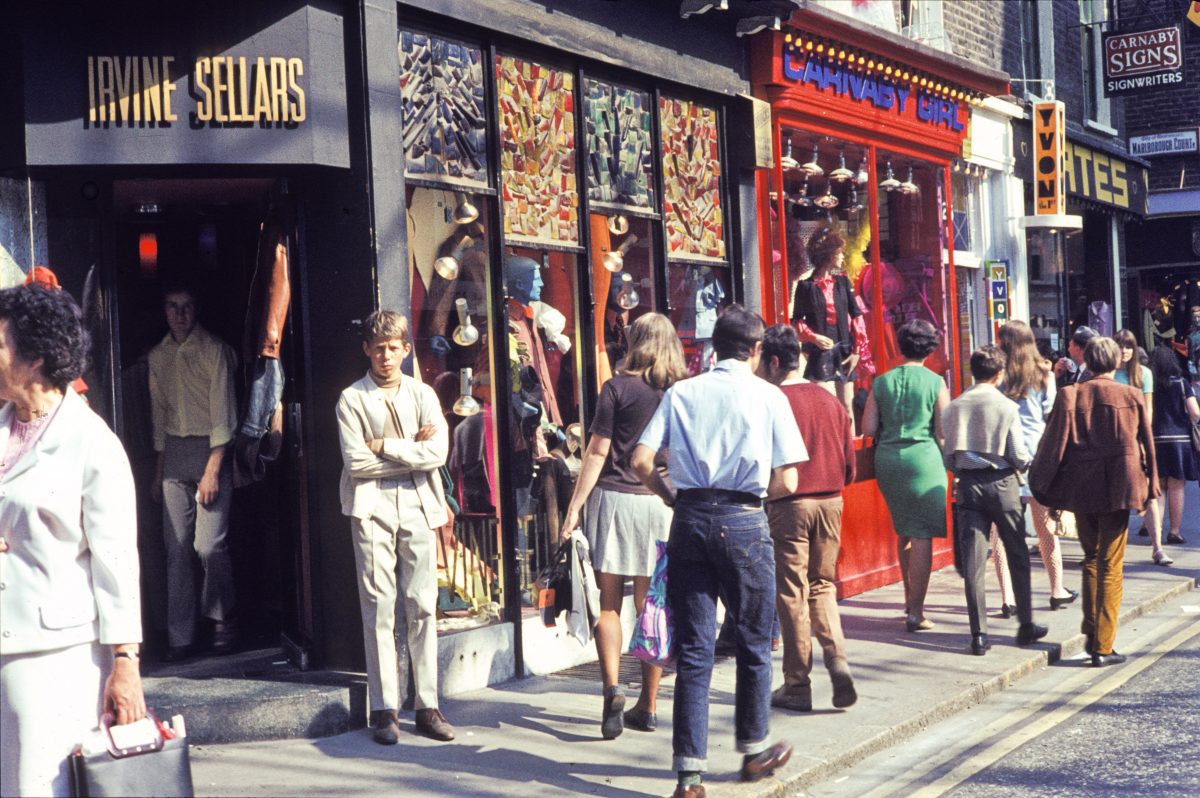
Carnaby Street England-1968. Irving Sellar went on to be a property developer and was responsible for the Shard.
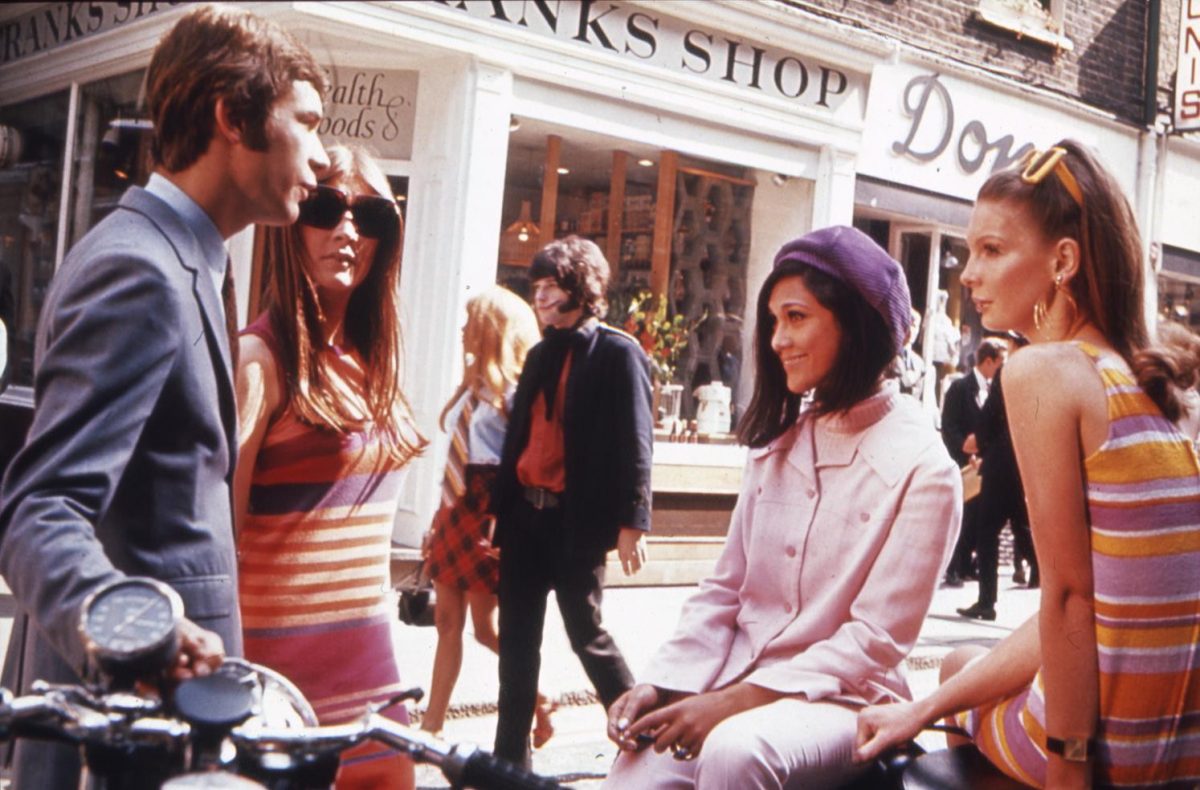
1969
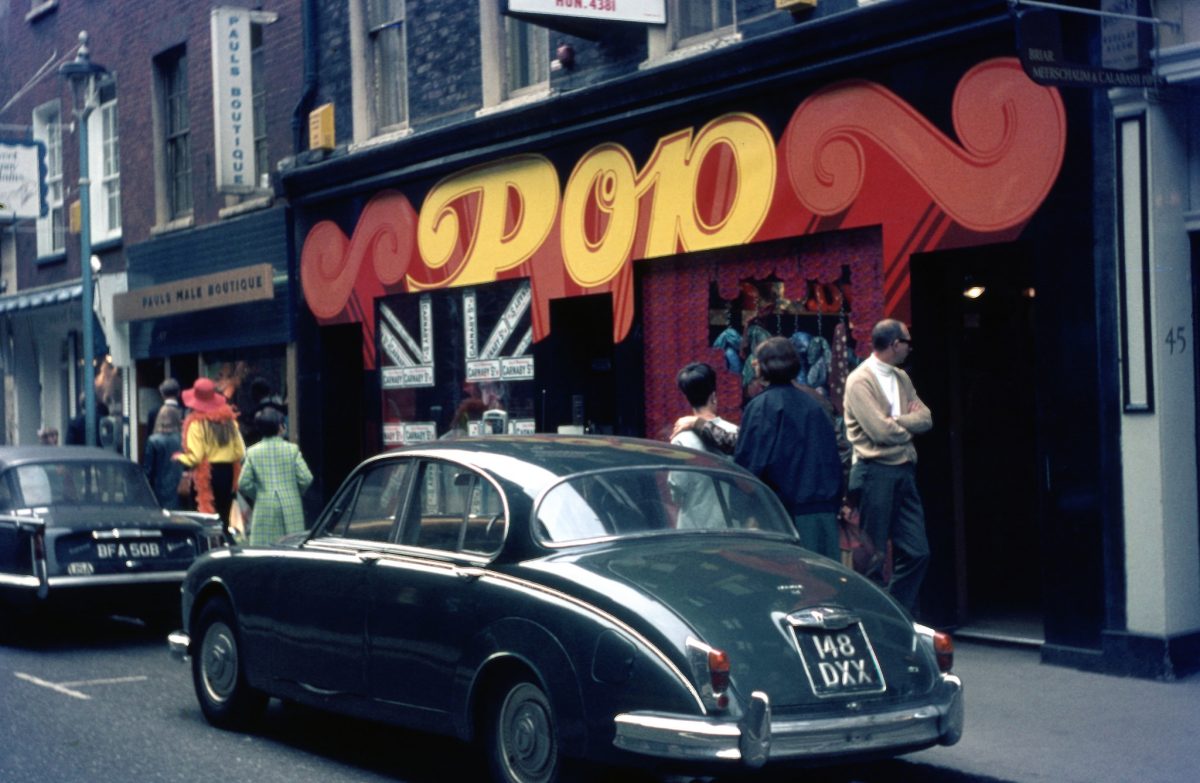
Carnaby Street 1968
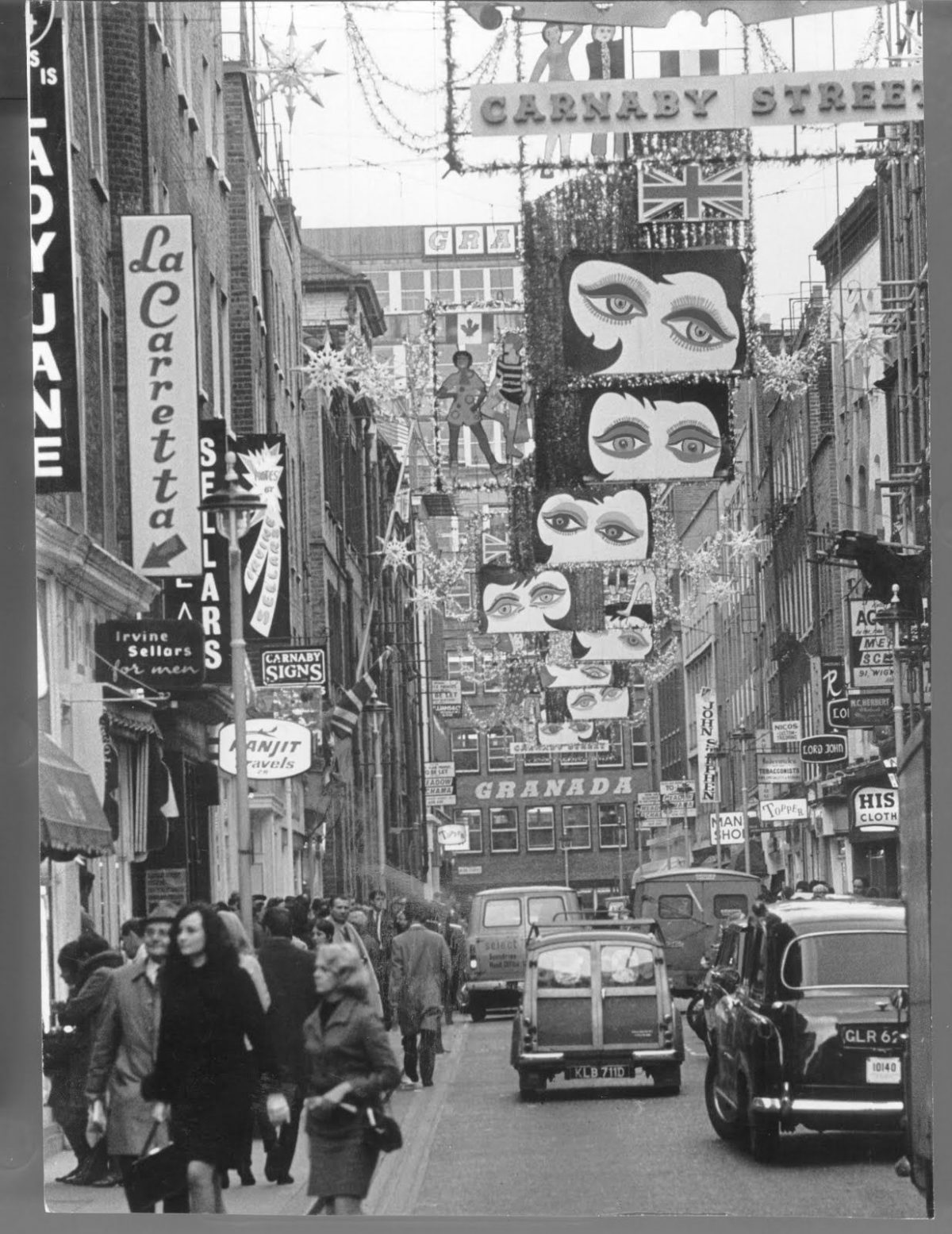
Carnaby Street
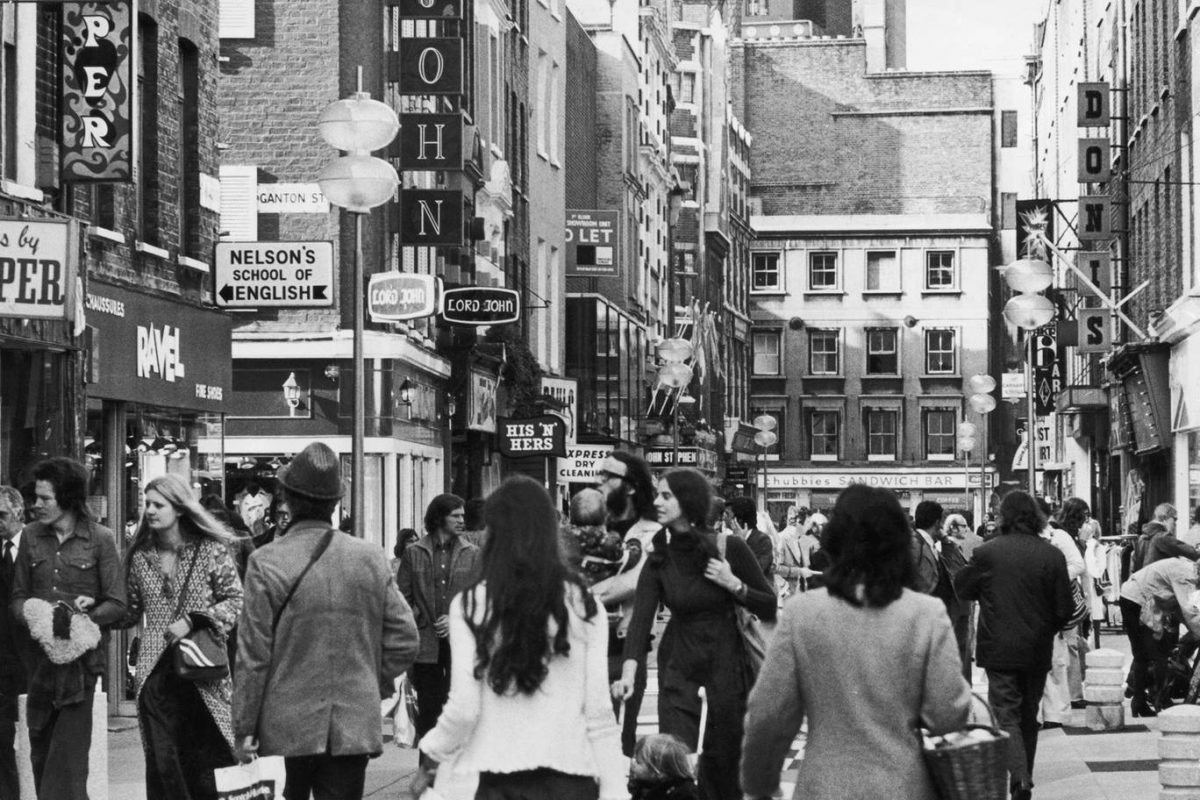
1973
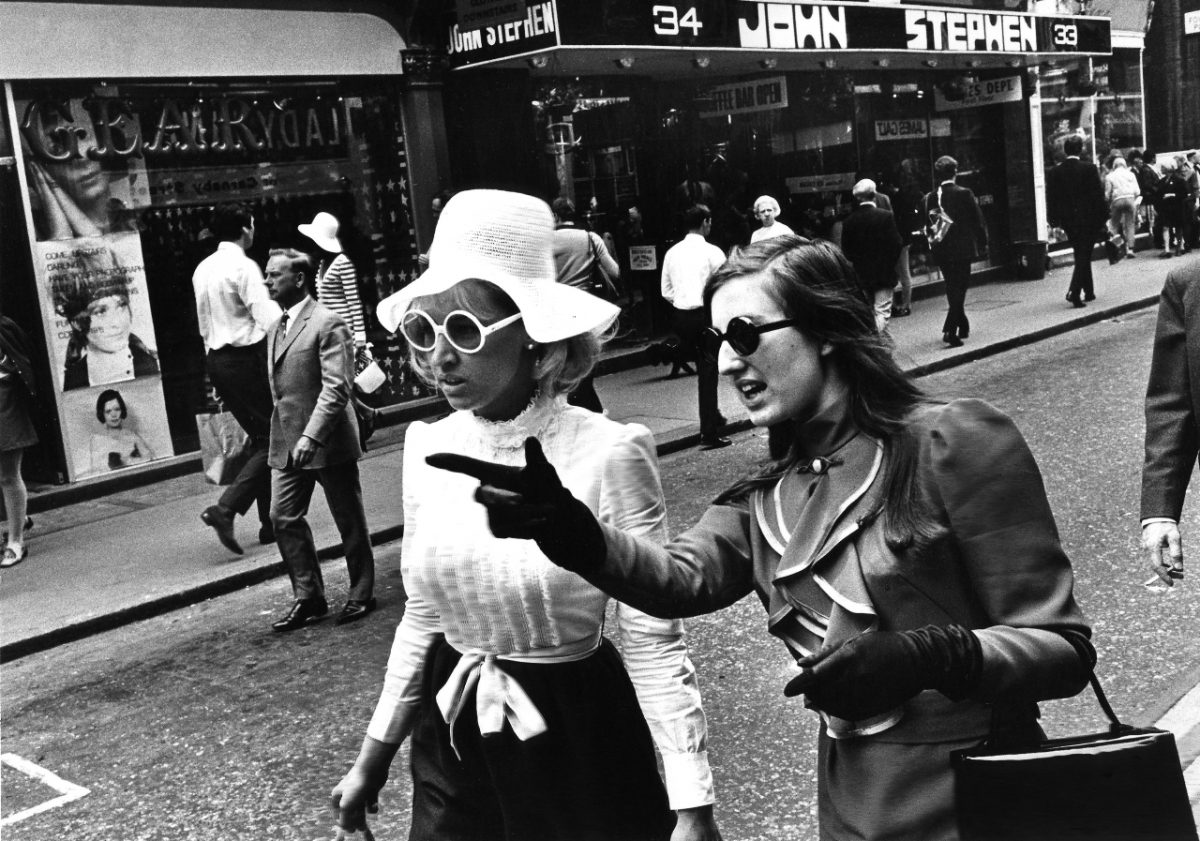
Carnaby Street by Lasse Persson 1968
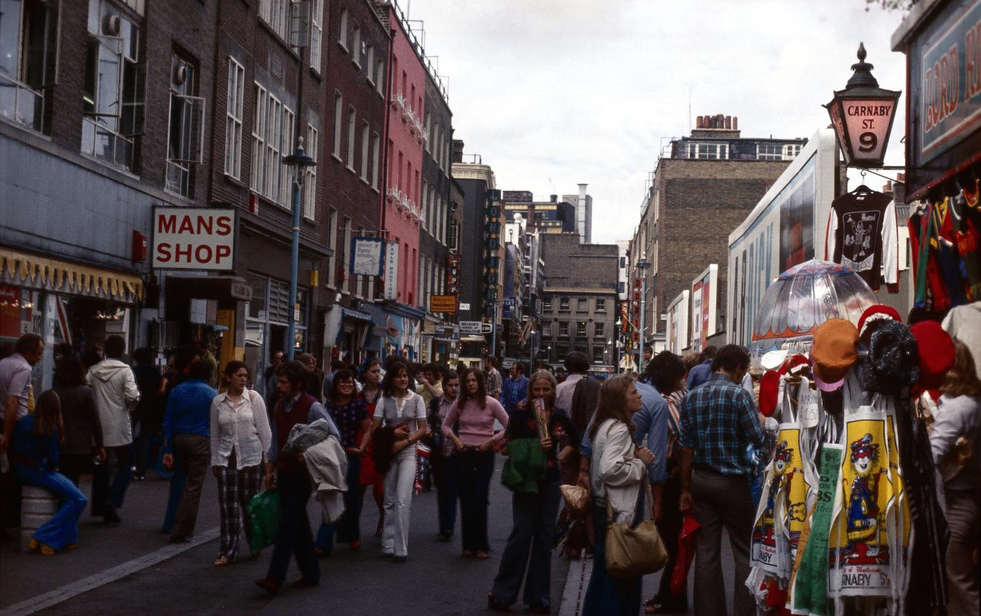
Carnaby Street 1973
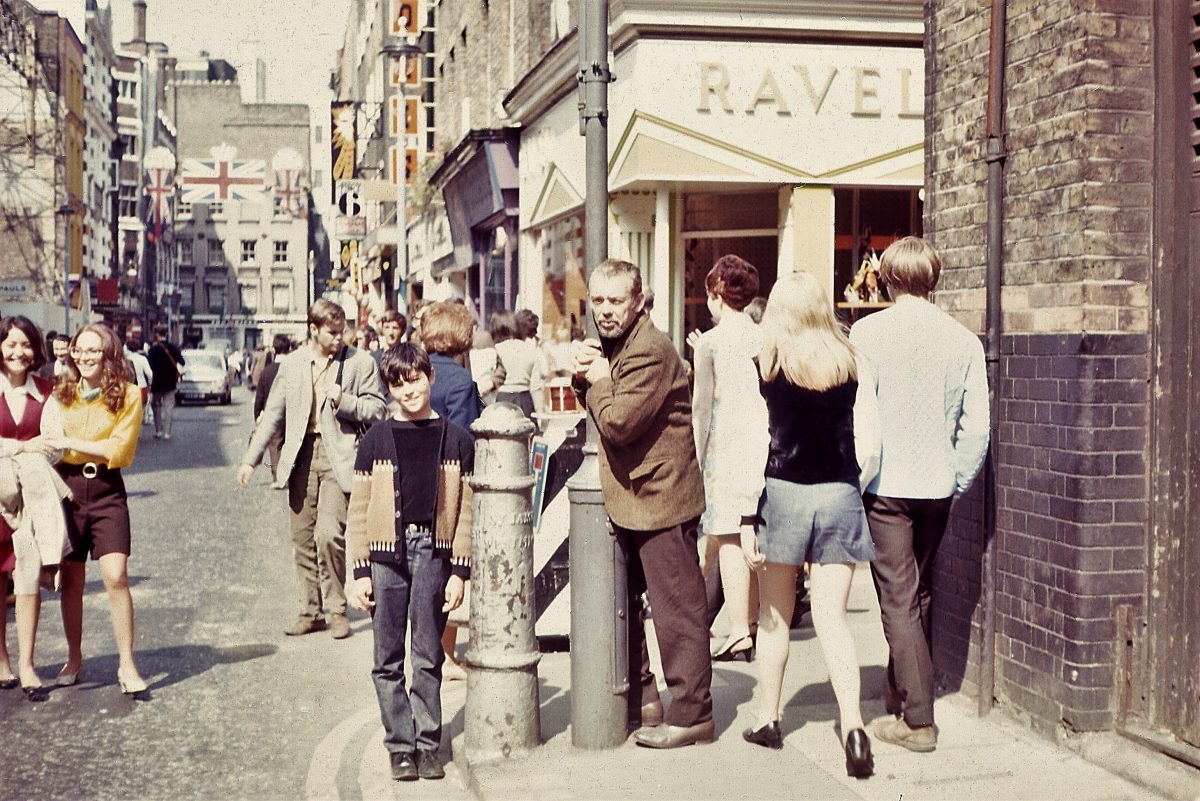
Carnaby Street 1968
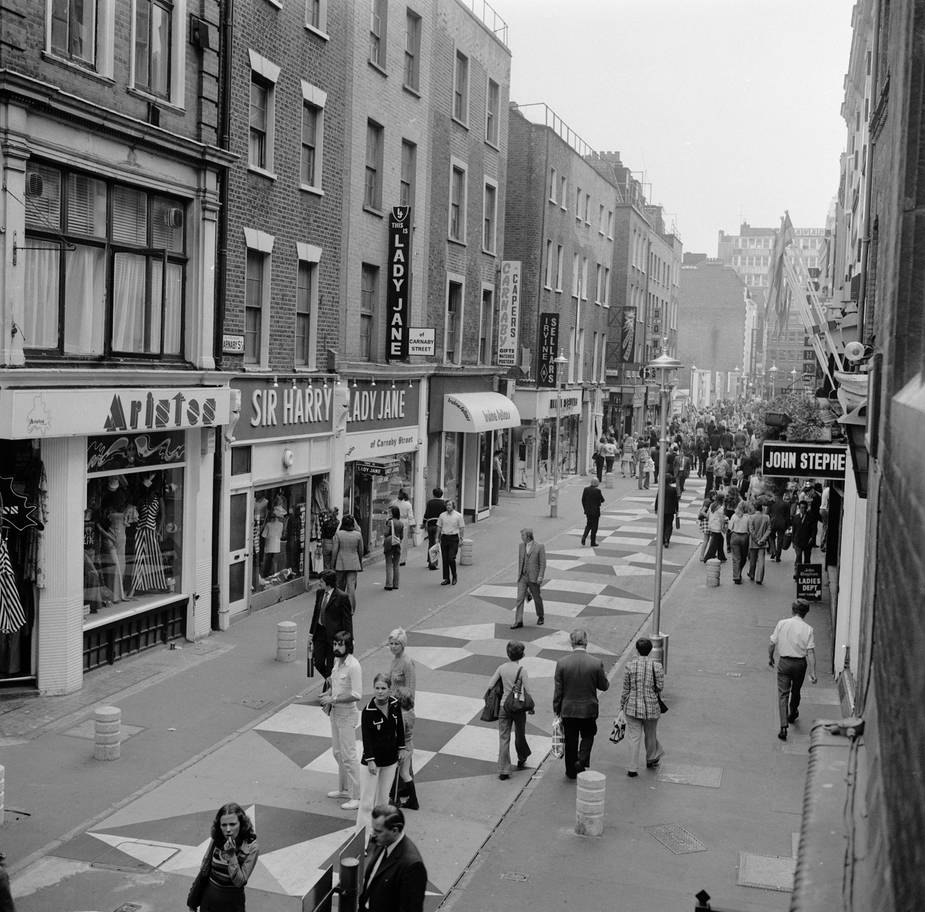
1973- The paving tiles were part of Westminster City Council’s £60,000 face-lift for the pedestrianised street. Roger Jackson

1966 – Fashionable women take to the shopping street in eye-catching outfits. Carnaby St

1966 – A Mod sweeps his cloak around him after getting out of a sports car. John Waterman
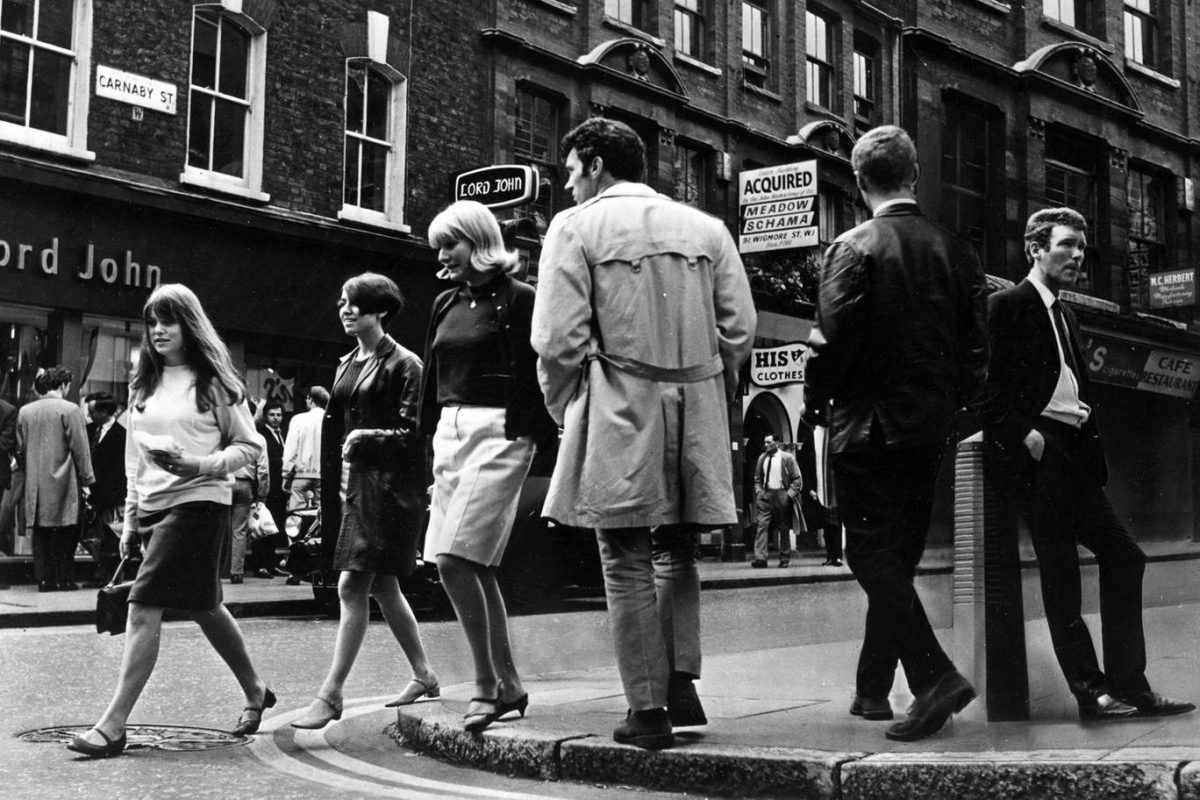
1965 – Young shoppers enjoying a day out in the sun. Carnaby Street
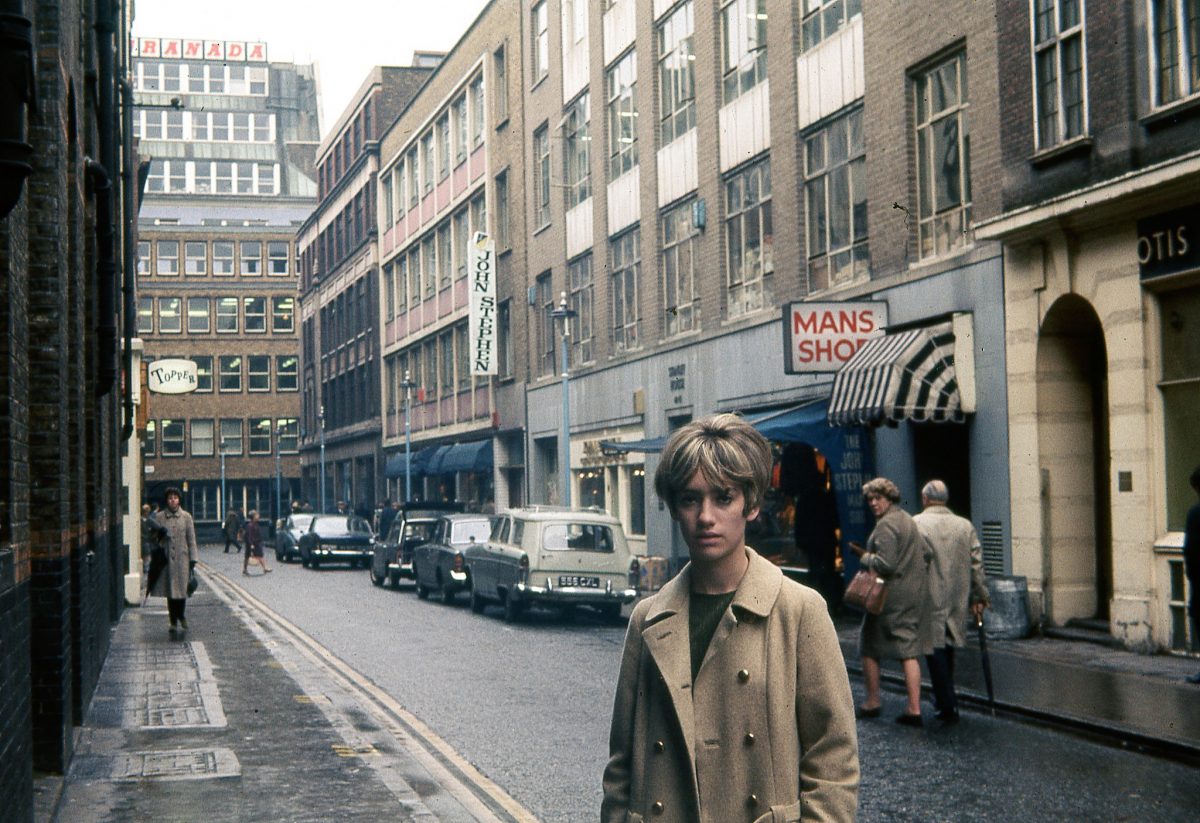
Carnaby Street, London 1967
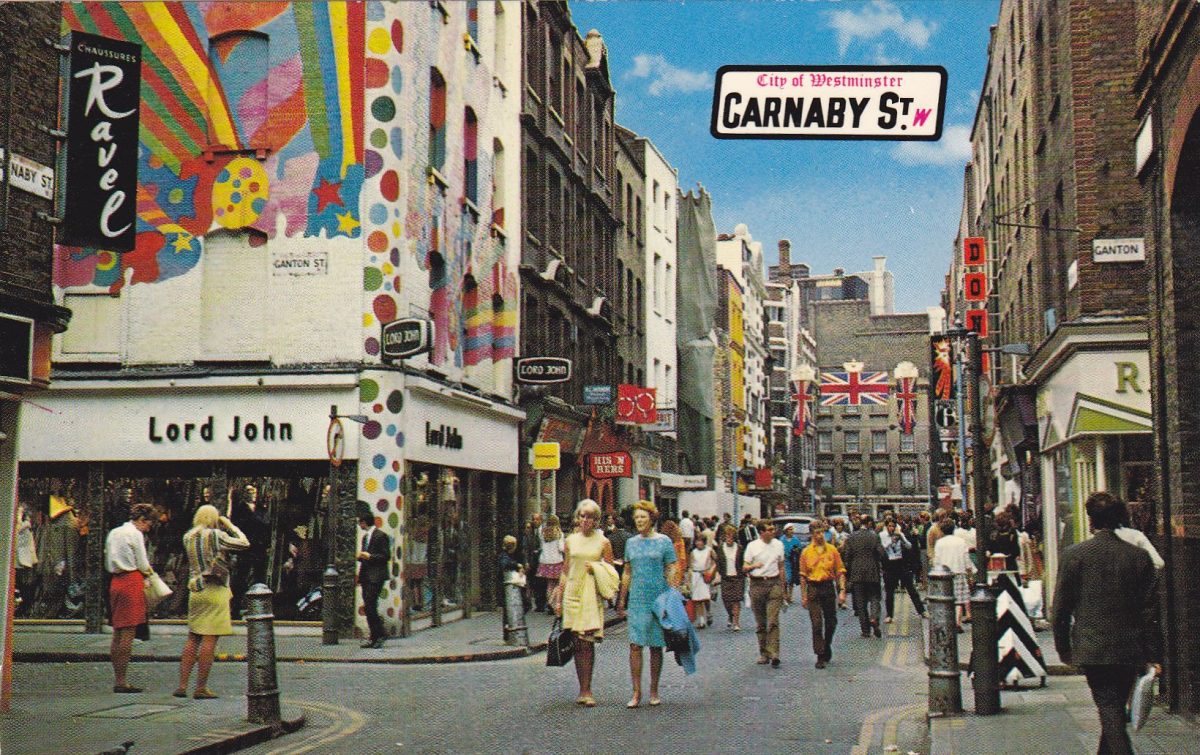
Carnaby Street postcard
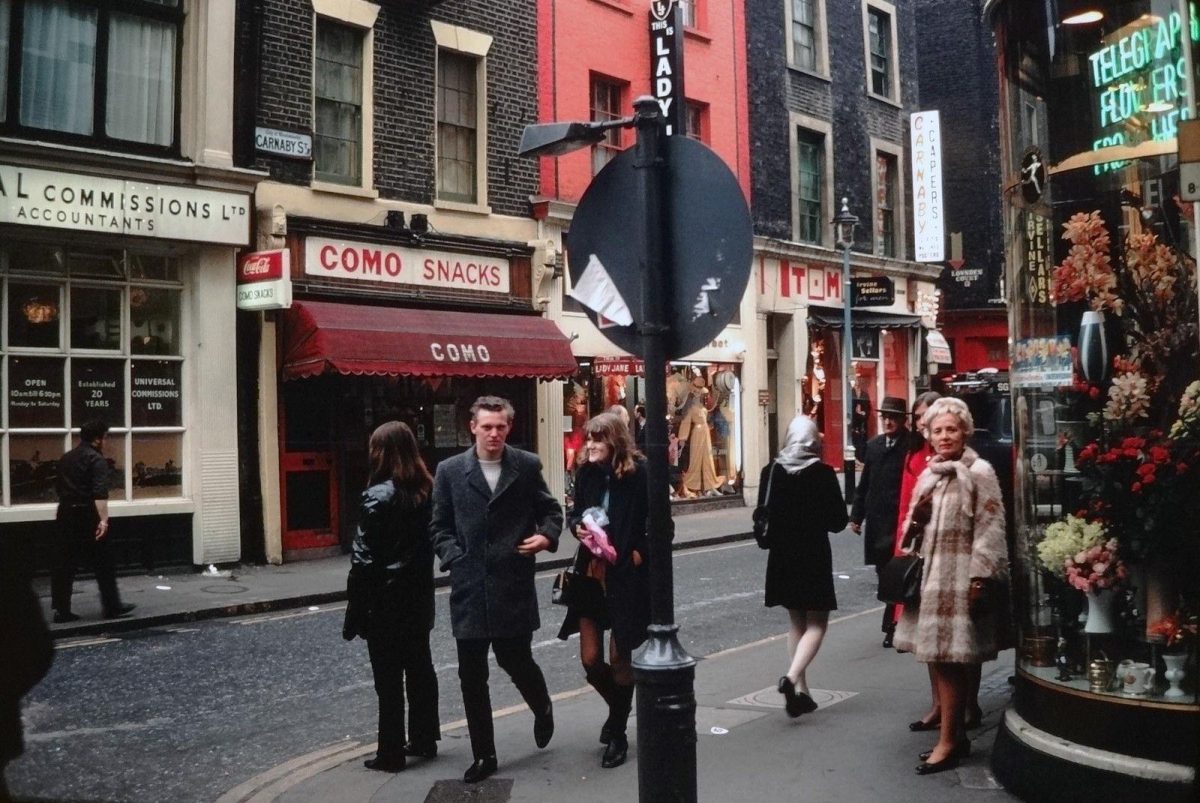
1969
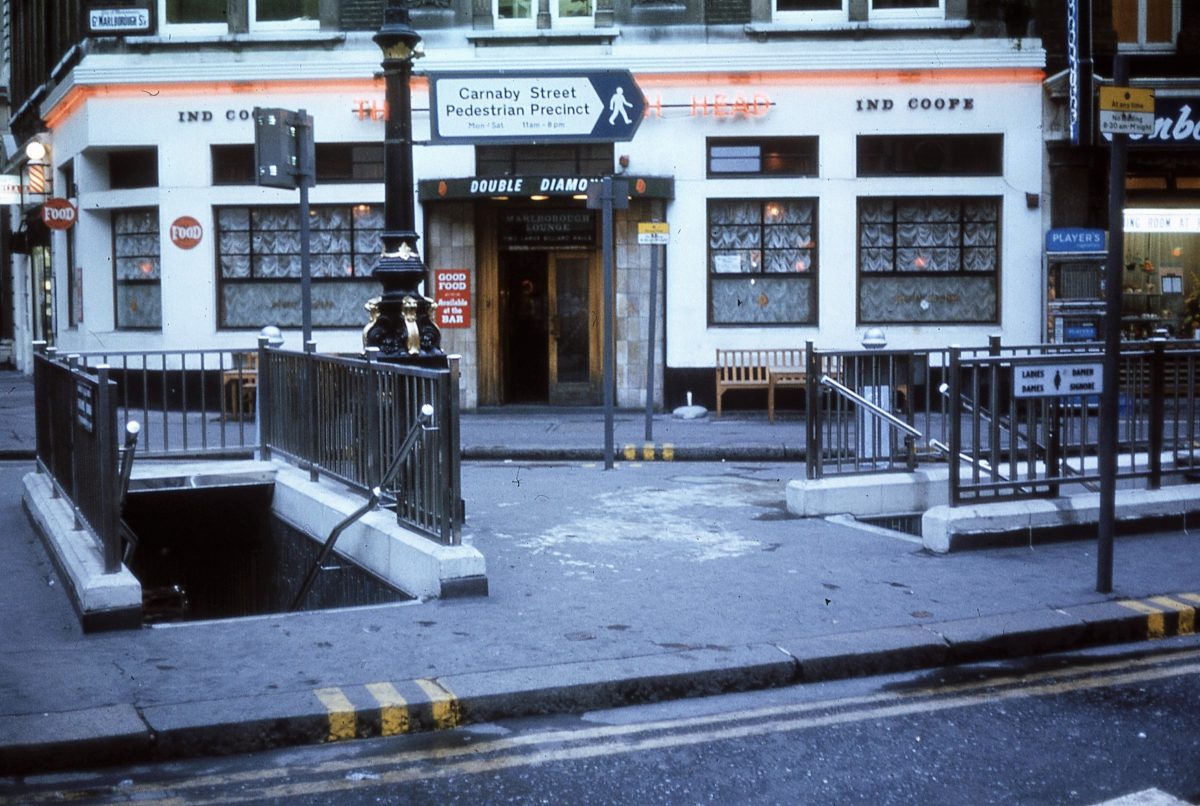
Great Marlborough St:Carnaby Street, London 1972
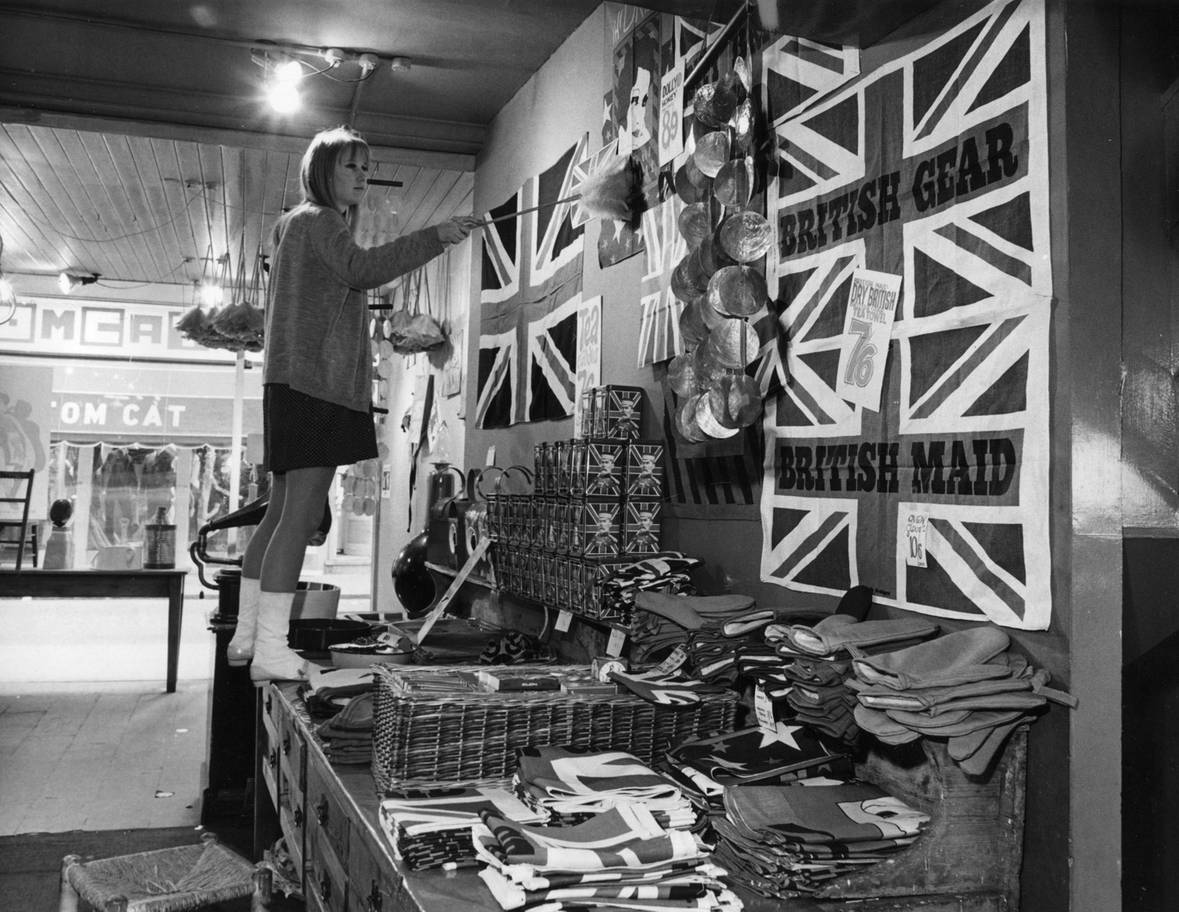
1965 – A woman dusts down Gear boutique, a well-known shop on Carnaby Street.
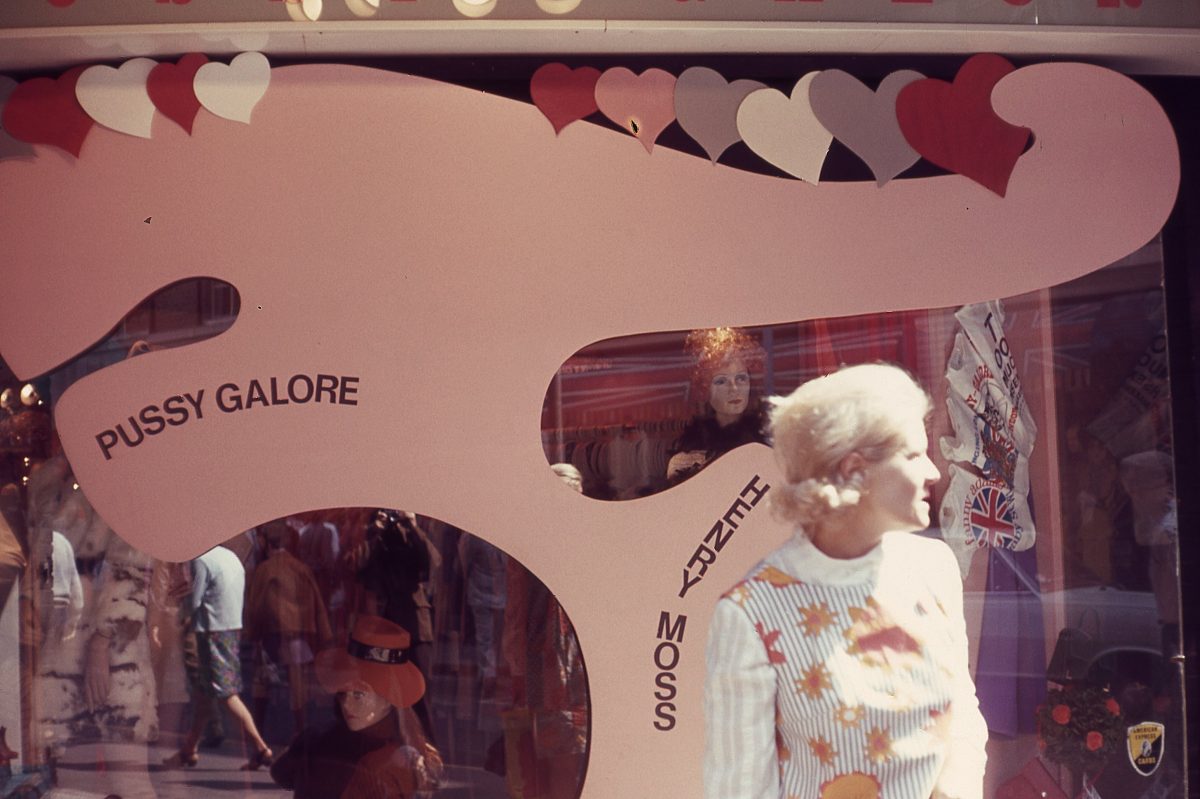
Pussy Galore, 1968
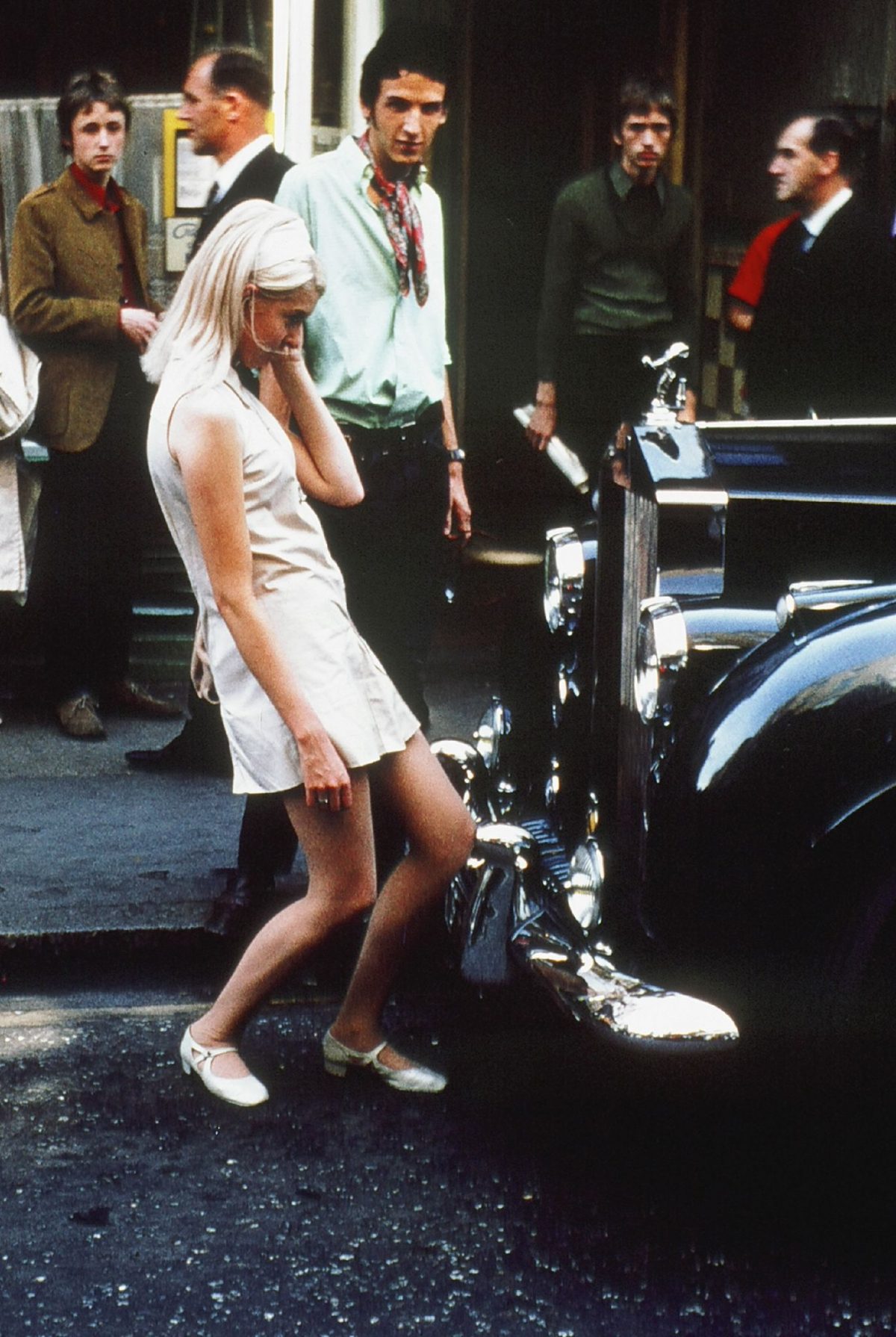
Newburgh Street, 1968 – RB Reed

Lady Jane, 1967
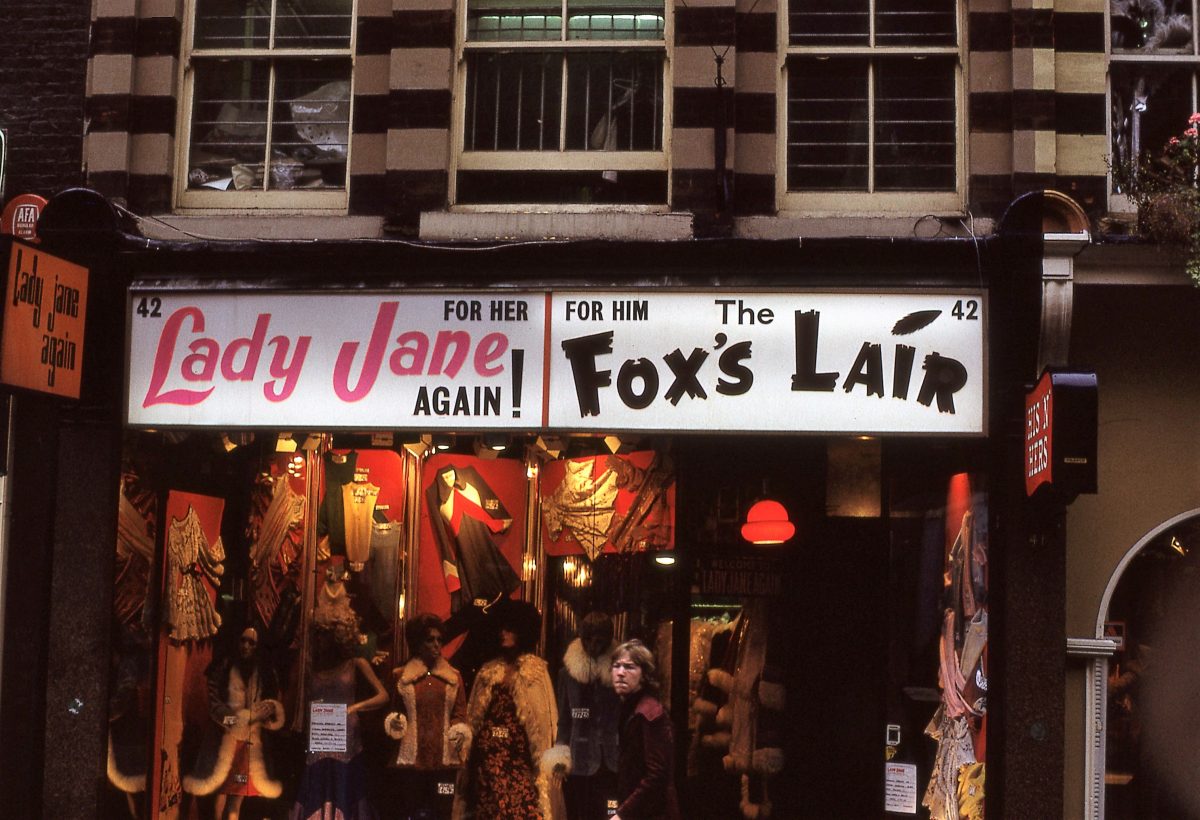
Lady Jane Again, Carnaby Street, London 1972
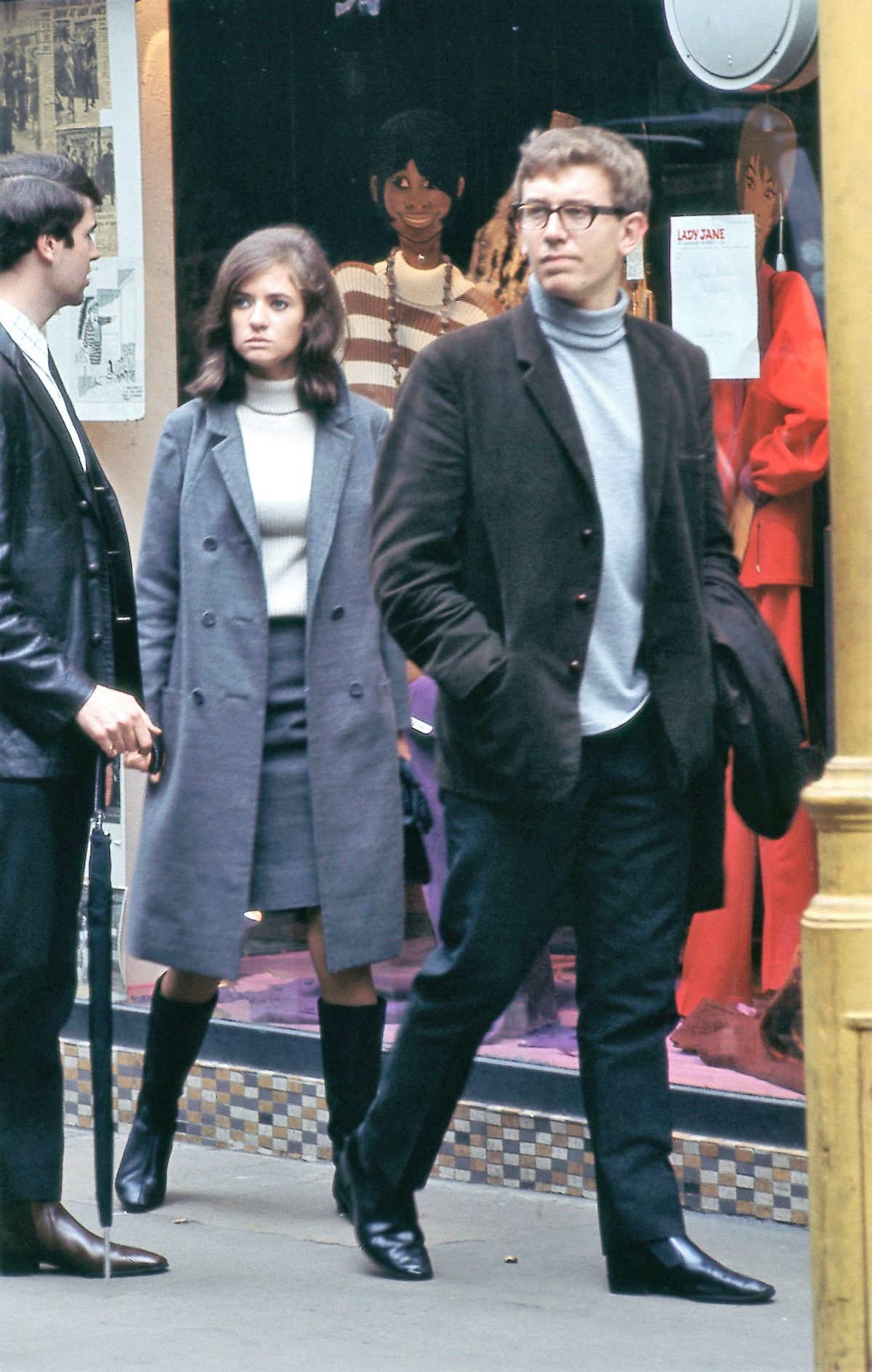
1966
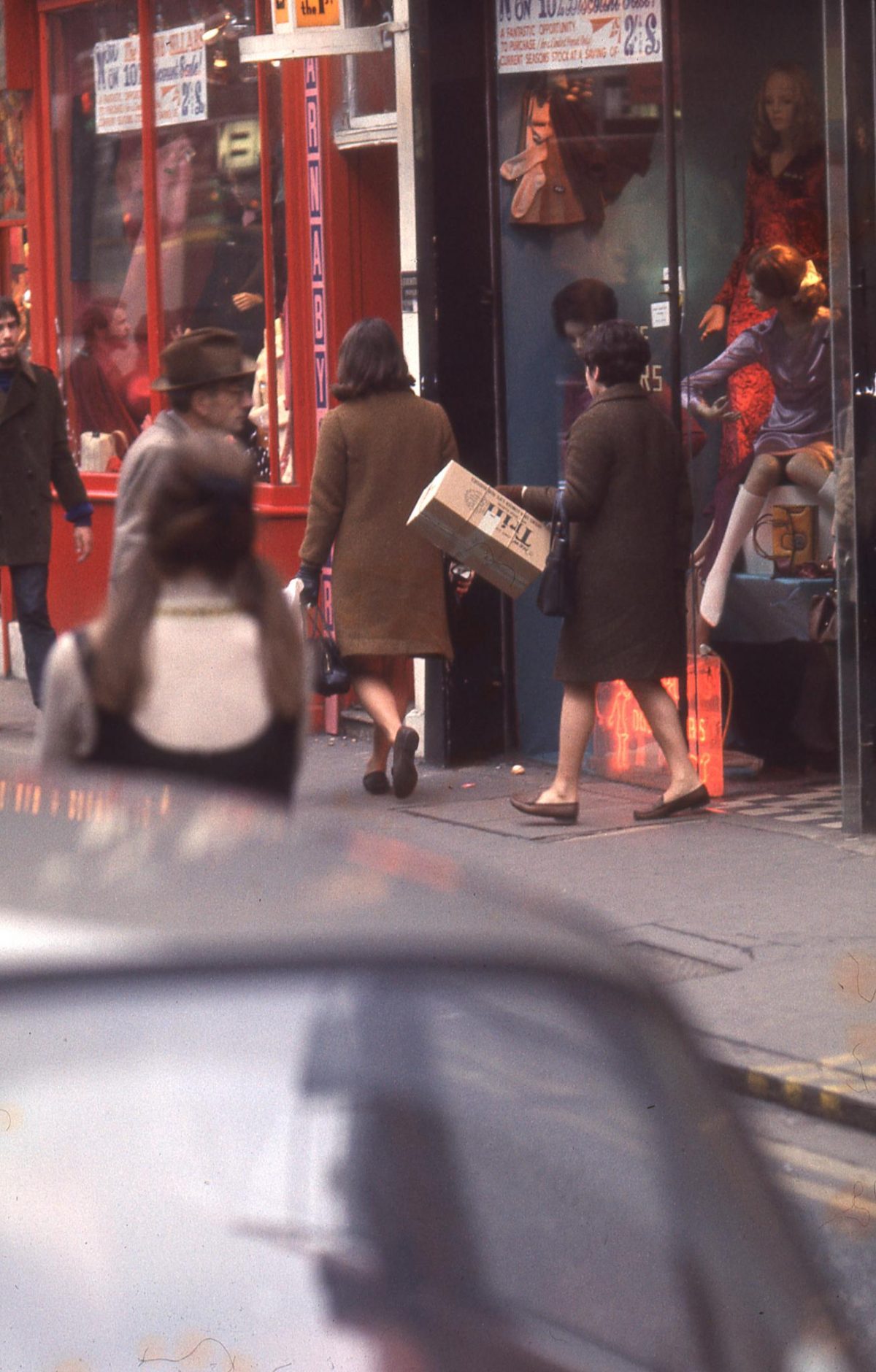
1969
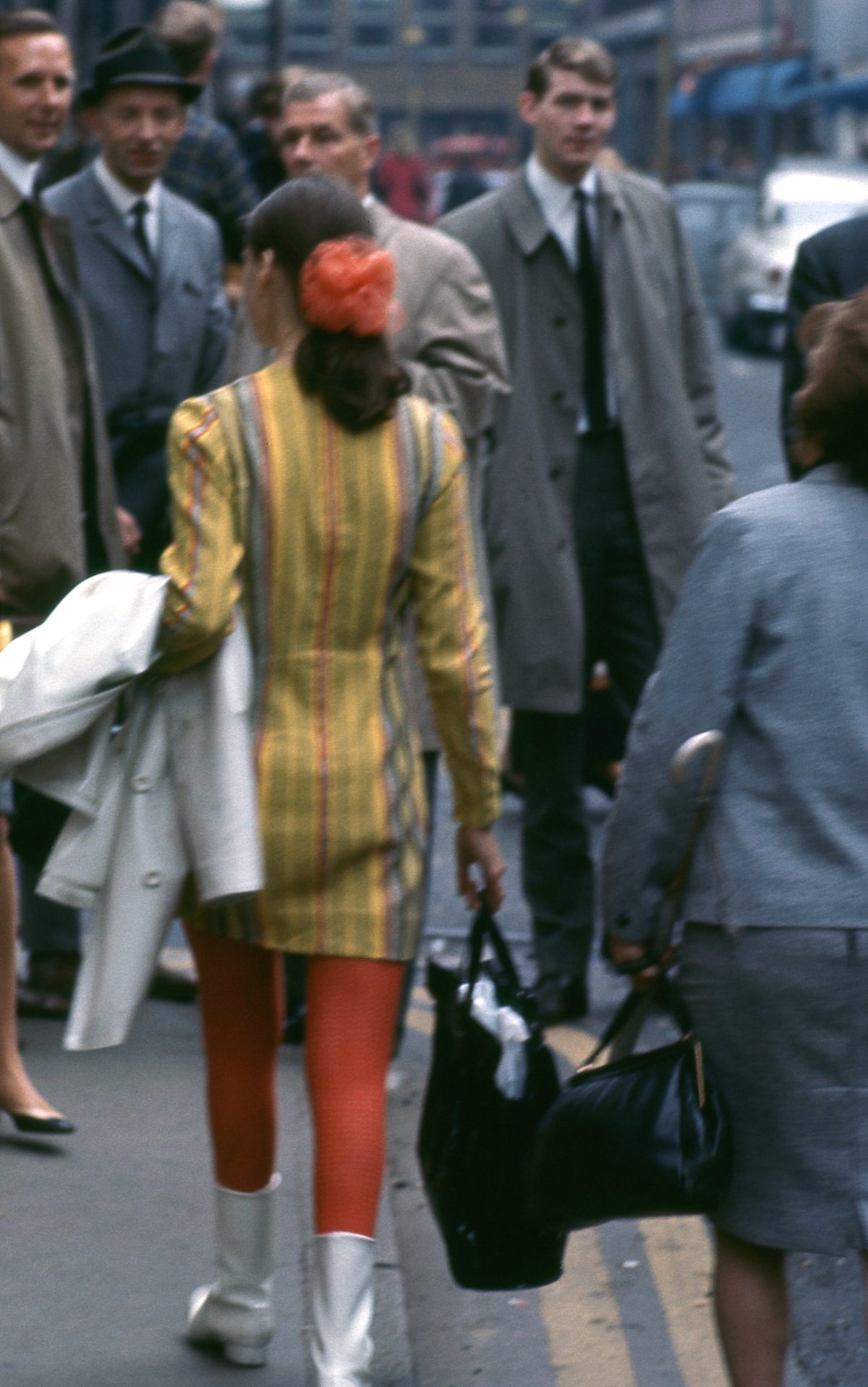
1966
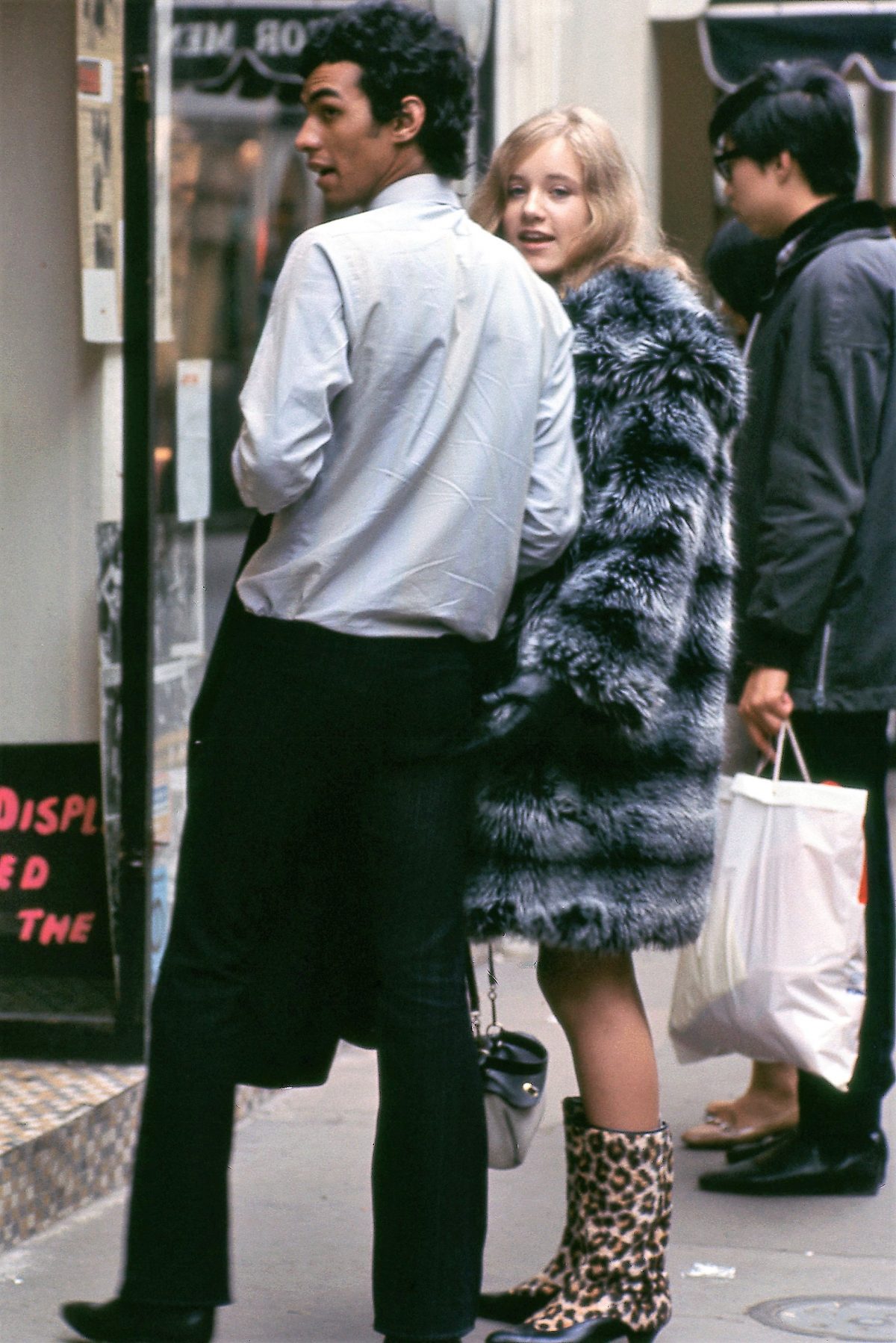
1966
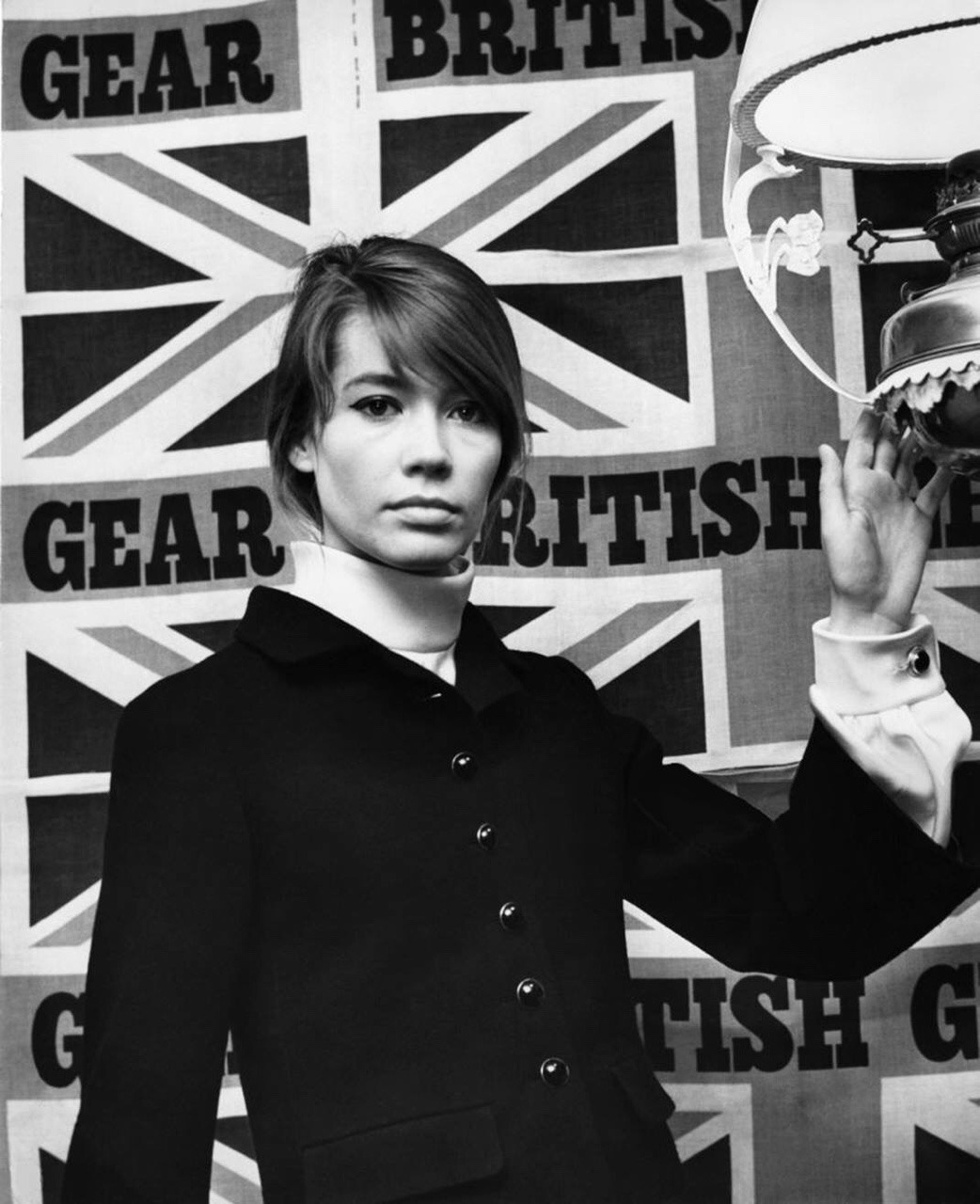
Françoise Hardy visits Carnaby Street and British Gear by John Pratt
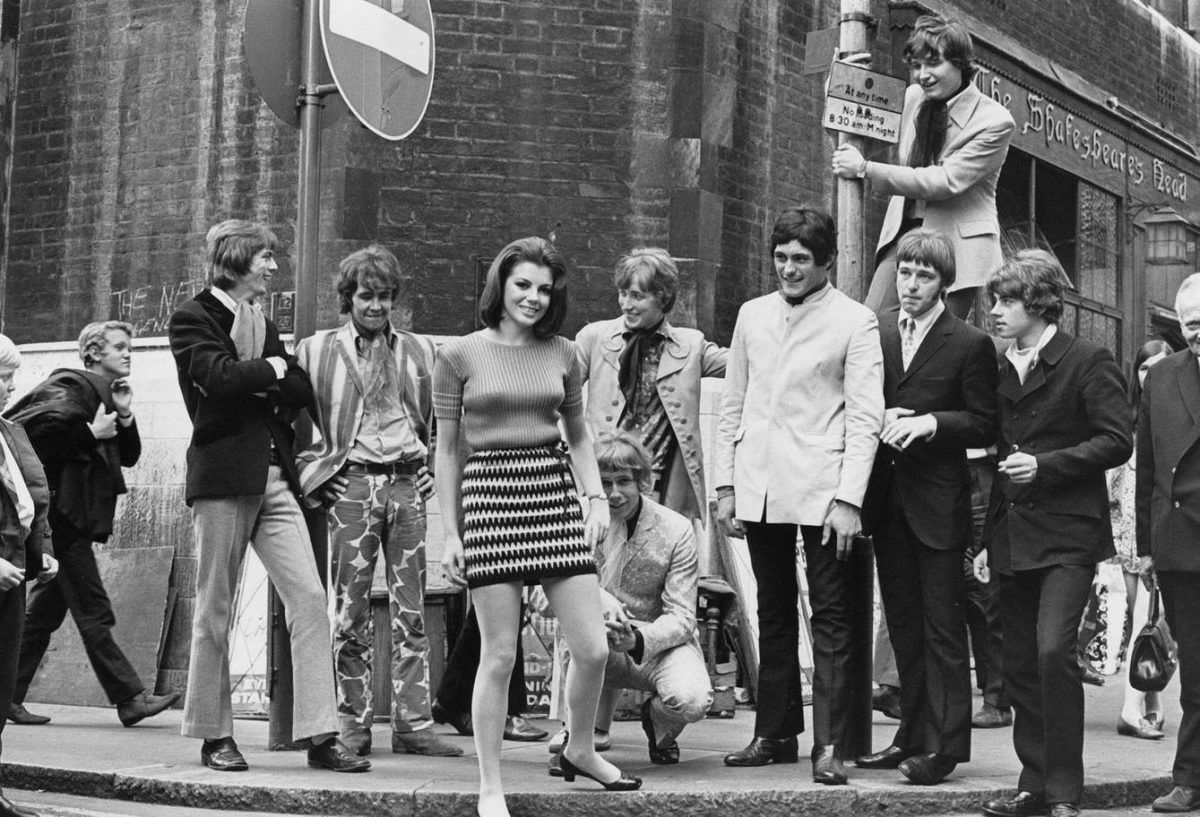
A Page One Records promo pic photo shoot for The Loot’s single She’s A Winner, released October 1968. They are outside the pub on Great Marlborough Street, corner of Foubert’s Place, near Carnaby Street.
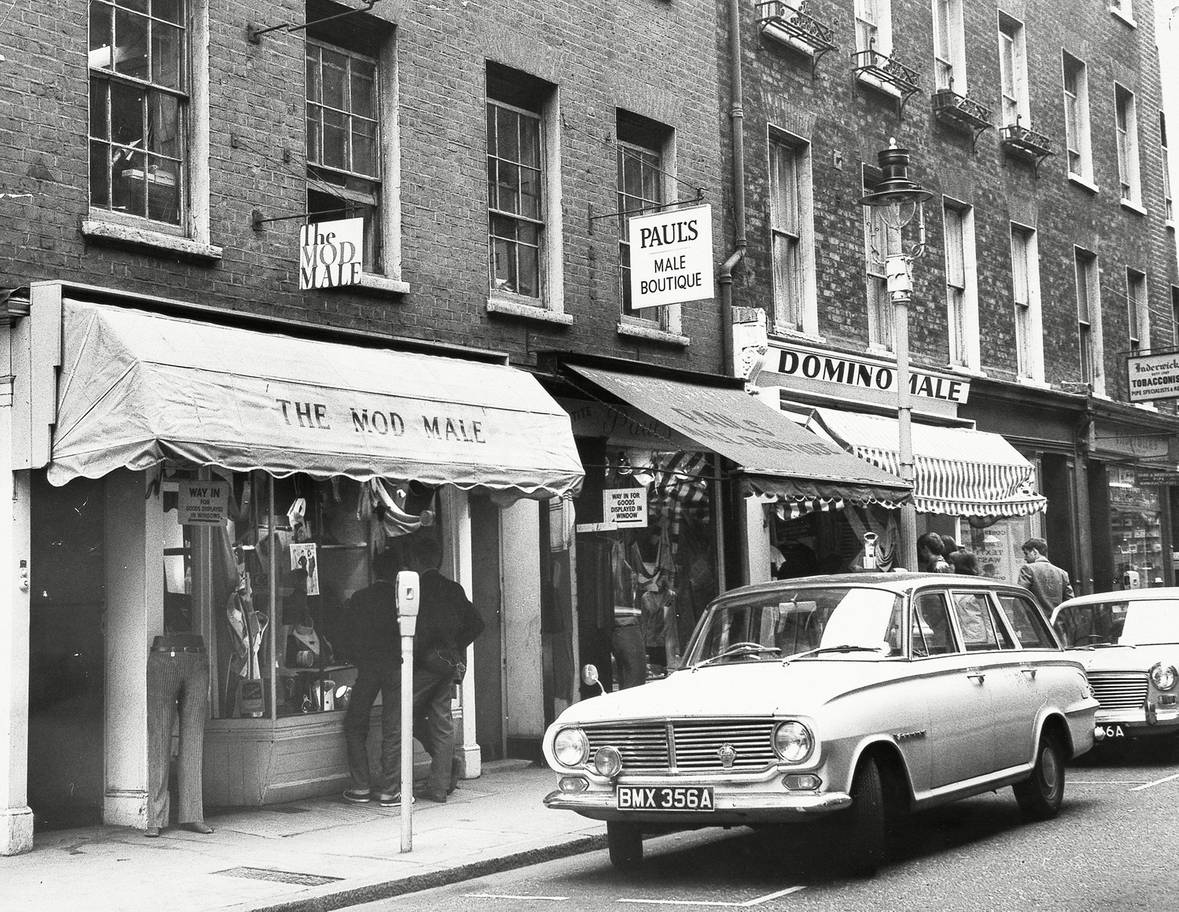
1964 – Exterior Of menswear shop ‘The Mod Male’.
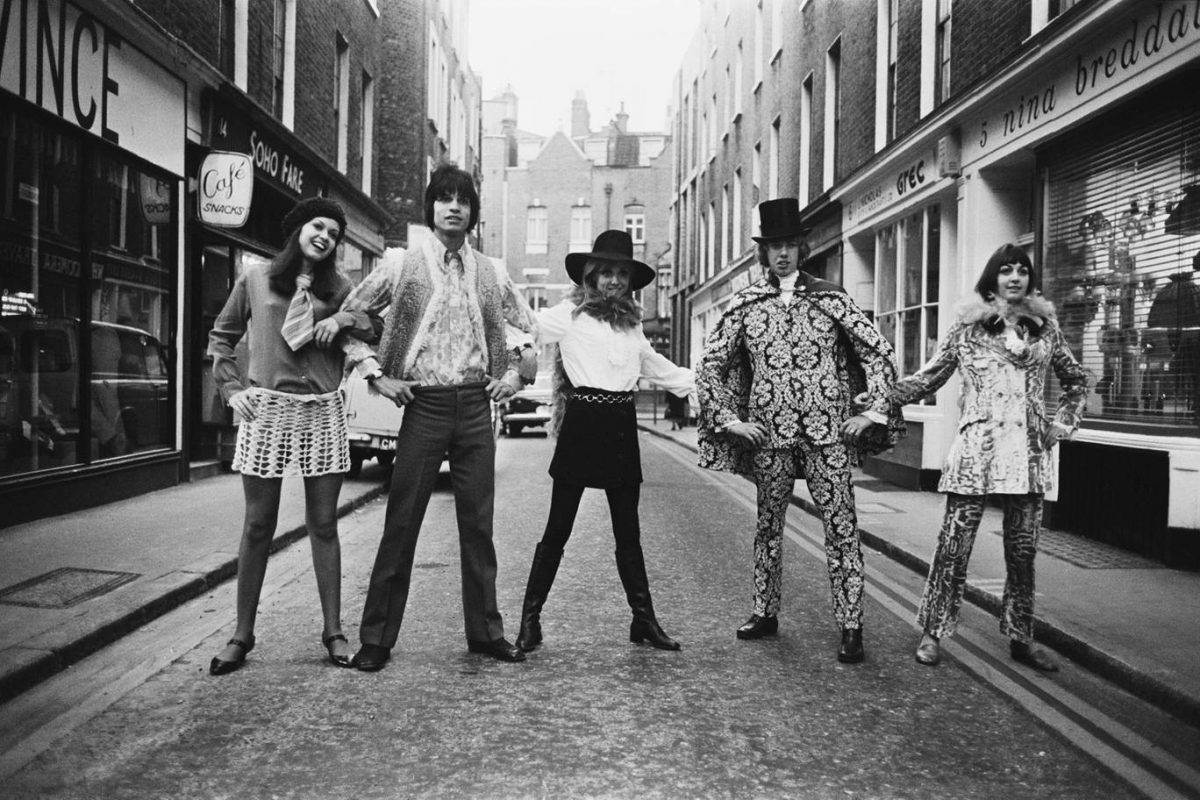
1967 – A group of fashionable youngsters model the latest looks from Carnaby’s boutiques. R. Powell

1969
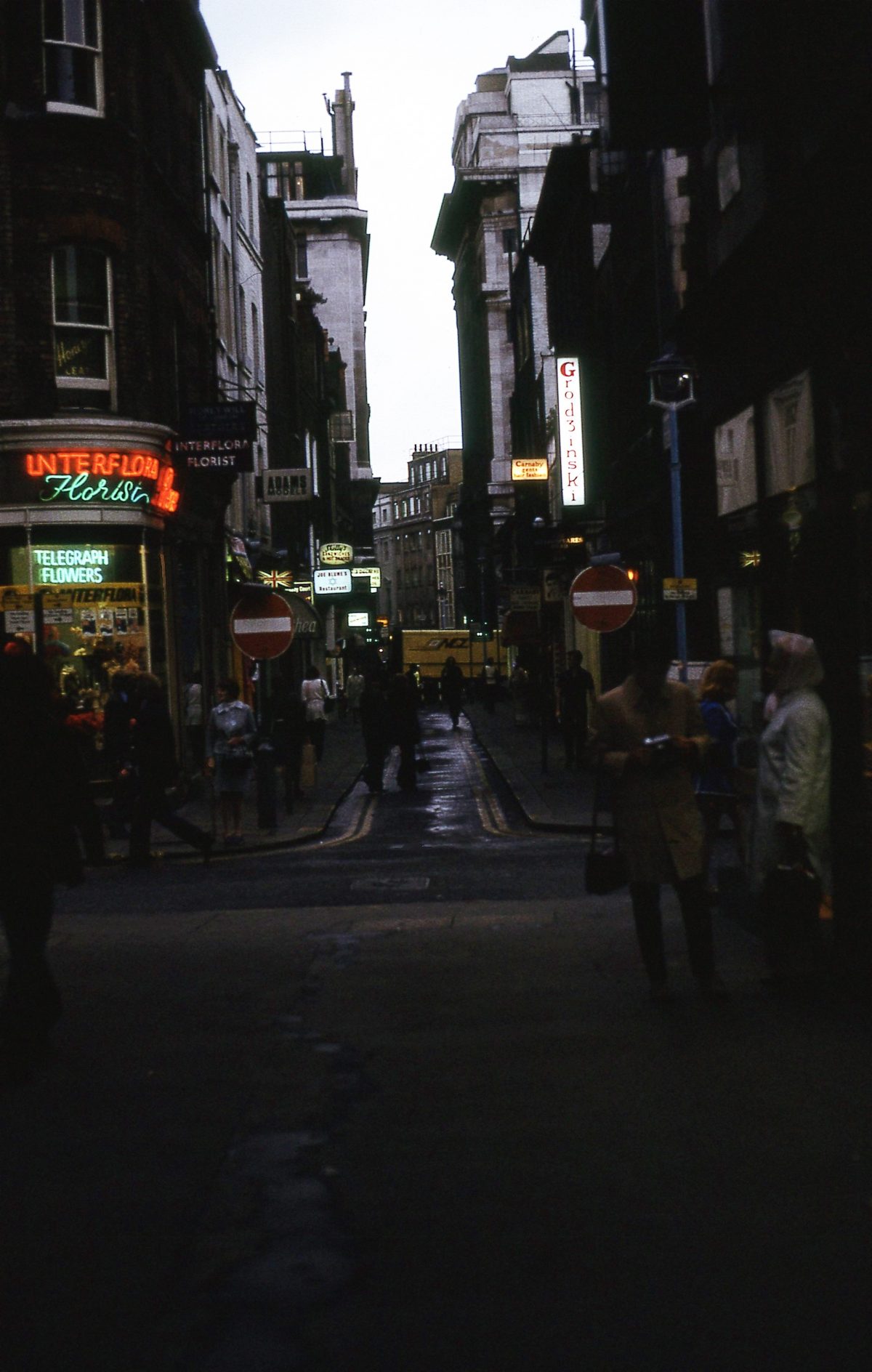
Foubert’s Place, Soho (looking across Carnaby Street), London 1972
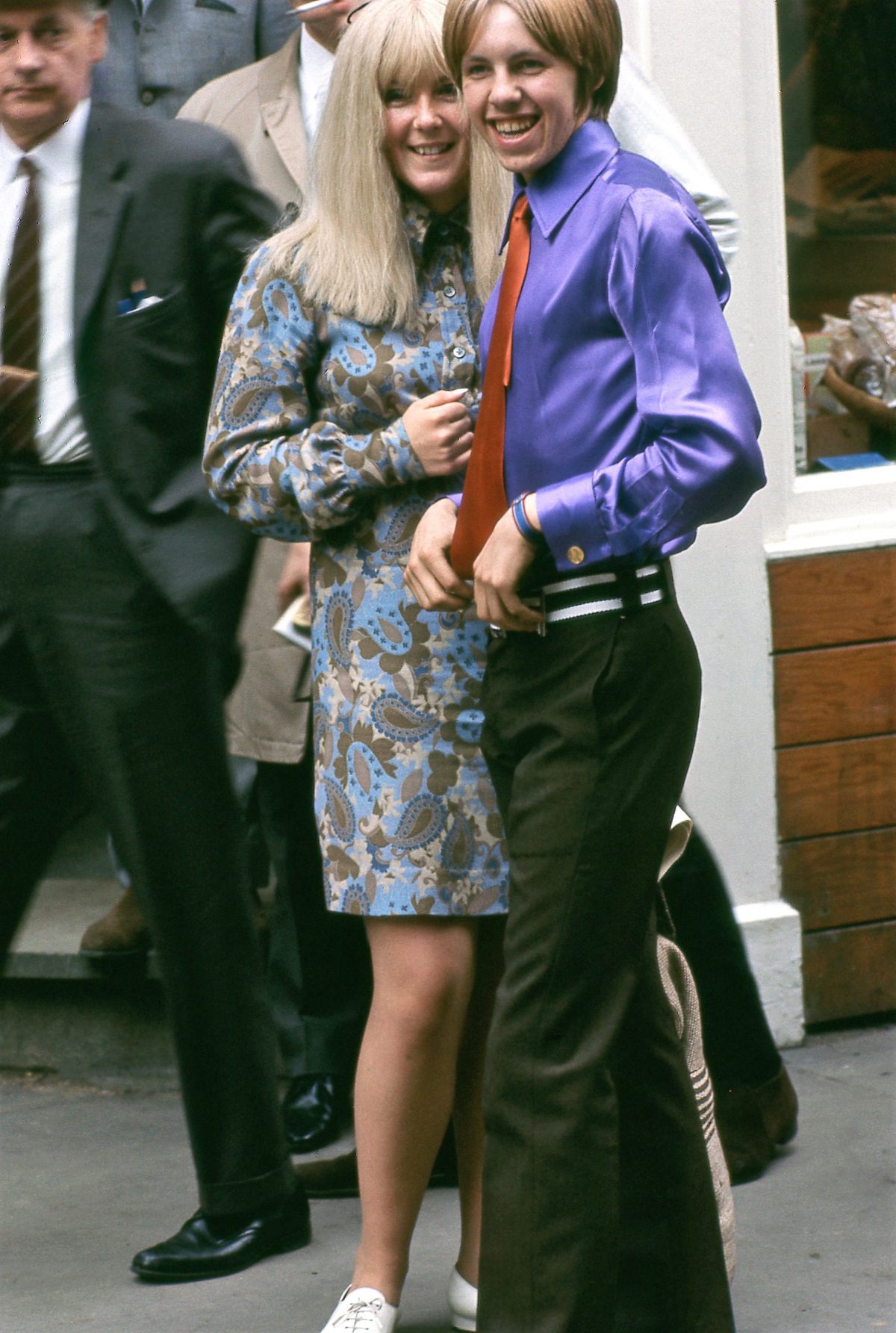
1966
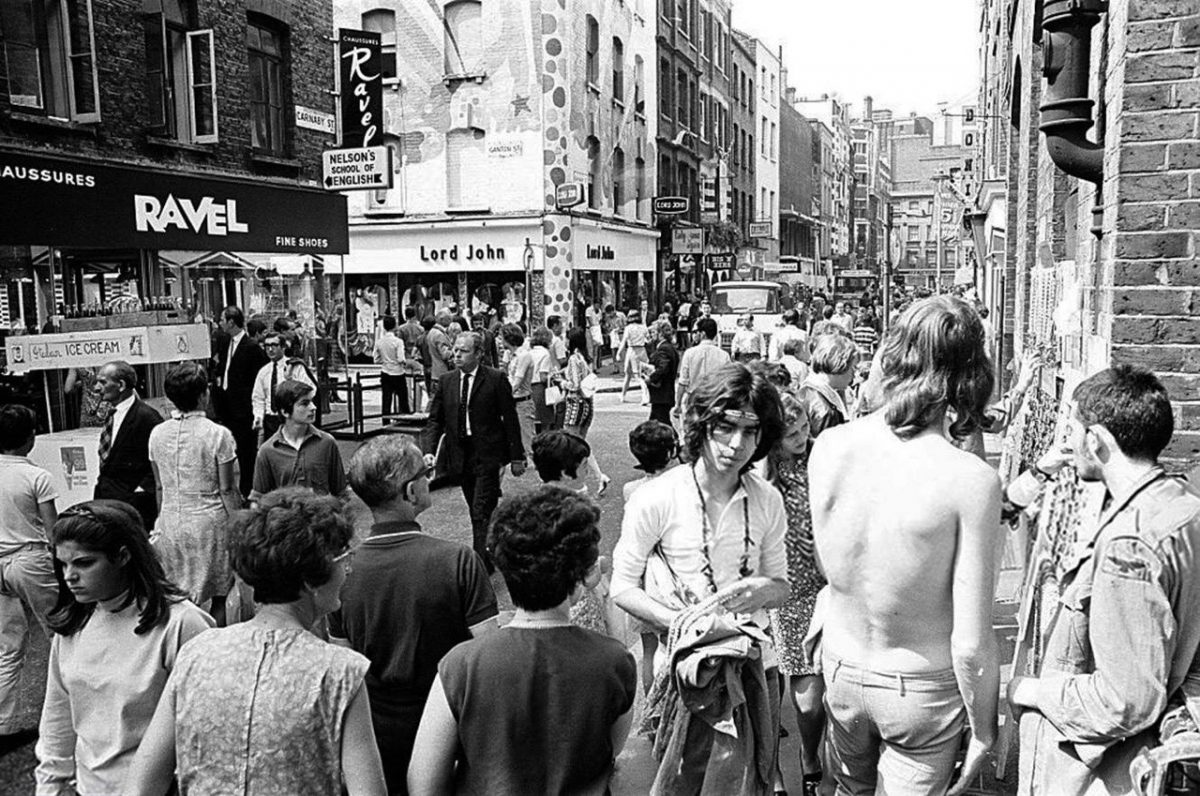
10th August 1968.
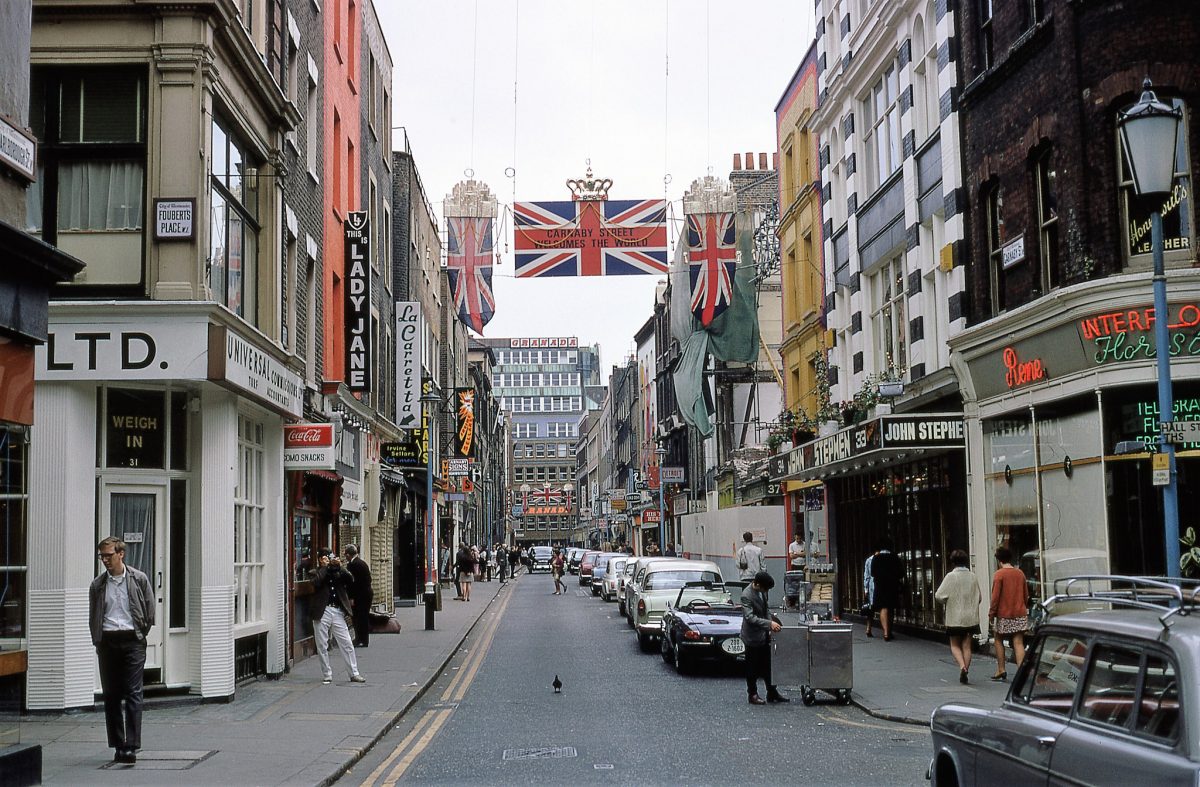
1968
Would you like to support Flashbak?
Please consider making a donation to our site. We don't want to rely on ads to bring you the best of visual culture. You can also support us by signing up to our Mailing List. And you can also follow us on Facebook, Instagram and Twitter. For great art and culture delivered to your door, visit our shop.

